#contribute to the bigger picture; they all speak of history and how it plays into who they are now idkidk it's just. such a way with words
Explore tagged Tumblr posts
Text
i think i ran out of tags
copy pasting this from tag format i'm sorry this is a mess !!! shgdfvhsa
#i looove all the details of intimacy!!! knowing his fave movies and the books on his shelf. finding out his favourite food.
#how he rubs lotion onto your hands :(( & it ties in with his comment earlier :(( and just !! How all the care feels like it shouldn’t belong with the two of your together but it does and it’s calming and comforting and :(( the healing!! your hands no longer cracking. what that means!!
#HE HOLDS UR HAND FOR THE SAKE OF HOLDING IT :((
#him choosing the colour of your eyes too :(( sdjhbfsj i looove the silent care they have for eachother. how not asking feels like that. how they protect eachother :(( im so sad 'i should have died that day i would have been more useful as legend' UUGH SO GOOD
#how he separates himself from it like a god oh thats so good that entire scene aches oh my god???? SO GOOD
#i love that beach scene i love the dialogue in this entire thing its just so raw and tender and SO MUCH in the unsaid
#the cogs in my brain are always turning when i read your stuff op and i love how there are a lot of things left to interpretation idk i have NO IDEA if how i'm reading it is correct but i love it bc it allows me to dig deep and try to figure that out!!
"you're so pretty, sometimes it makes me miserable" GODDDD how can he say that oh my GOD and and and how he tells you he'll do all the things you want to :(( 'i don't want my pieces i want yours' :(((
WAAAAH i love this so much. THAT ENDING!! GOSH. the way they see eachother :(( IM SAWBING this was so good thank you so much op, you're fantastic amazing wonderful everything!!!! as always!!!!!

ariadne's thread (3,839 words) Rating : Mature Gojo Satoru/Reader Tags : Fix-It, Jujutsu Kaisen Manga Spoilers, Major Manga Spoilers, Hurt/Comfort, Are You Gojo Satoru Because You're the Strongest, Or Are You the Strongest Because You're Gojo Satoru, Reader Has a Cursed Technique (Jujutsu Kaisen), Reader is JADED, Clingy Gojo Satoru, Mythology as a Motif, Vanilla Sex
Summary: He loses himself. He finds you, instead.
Read on AO3
#oh my god one of my fave gojo writers ever dhfbsad so good#pls read this#jjk#satoru#i loooove the read on gojo always; how op writes him with so much depth and character and just IT'S ALWAYS SO GOOD#everything feels so painfully accurate like gojo believing religion is more fallacy than faith. that opening paragraph:#i'm not a fan of ghost stories / too bad he is one <- UUUUGH I LOVE THAT#i also absolutely love the creativity put into the cursed technique of the reader it's so cool#there's also always this air abt op's fics that feel simultaneously comforting yet unsettling IDK HOW TO DESCRIBE IT it's like warm black#gojo showing up so persistently on reader's door is SUCH a him thing to do hsdfb + the dialogue?? AMAZING SBDFJ it's so in character#he's so insufferable i want to strangle him AHJSFB#i loooove the exploration of his cursed energy; how it trembles shifting in and out of reality sbdfjs#and that bit. 'i only have half a soul' / 'maybe i lost it a long time ago' HOW HE SAYS IT WITH A SHRUG wow. i love that.#gojo having a strange respect for time too. i love that little detail; and generosity being a habit left from his boy-prince upbringing#i love love love the way you write op because you're able to write in so many details about a character so intimately!!! but they all#contribute to the bigger picture; they all speak of history and how it plays into who they are now idkidk it's just. such a way with words#i think gojo withholds a lot of things and the more he talks about something the less it matters to him.#i love descriptions in this; how the healing sessions parallel to how he's feeling idkidkidk!!! i can't even describe it properly#GOJO SATORU PAIN IN MY ASS DAMN RIGHTBSDBFJA I LOVE THAT#omg. and just. gojo being his petty ass not contacting you for three weeks sdshj there is SOOOO much intensity within him GOD#everything about this is so so so interesting bc of the condition/state he was left in after the fight#and the consequences of that + when it gets too much it's soooo. wow. op your brain is >>>>#'You realize you’re not just a comfort for Gojo. You’ve been keeping him alive.' and the scene after oh my god#:(( take me with you next time :(( only if you pay me overtime :(( CLENCHING MY HEART RN#and he keeps you with him after. ooh my god. i loove that :( how the day just drags on and you never leave and it just repeats#op you are soooo good at writing scenes like this and i adore it so so much :(( the words and sentences are simple but they hit so much#i love that being with him kinda just happens and you grow comfortable to it and you have to touch him a lot bc of ur CT but#that becomes something natural too :(( and when hE RECIPROCATES AND EVERYTHING STARST ESCALATING OOOHH I AM#and that kiss omfghsbdg HE'S INSUFFERABLE I STG im gonna strangle him#what is the point of talent without enjoyment? <- wow
200 notes
·
View notes
Note
Do you think a degree is a good place to start to get into the narrative designer scene? I don't have any sort of degrees and whenever I look at job postings it kind of intimidates me.
You don't necessarily need a game design degree. There isn't a single route into getting a narrative design job and most of the narrative people I've worked with have academic experience in other areas. Classics, publishing, linguistics, screenwriting (and other kinds of writing), film, literature, teaching, computer science, biomedical science, history, and philosophy are all things that come to mind off the top of my head. I personally have an English Literature bachelor's degree and a postgrad teaching certificate.
I do know a few narrative people with game design degrees and they speak highly of that experience - but it isn't essential and there's some ambivalence in the field of games about how much value you get from it. It would really depend on where you were attending and who was teaching it, and so on. Do research the lecturers and their industry experience before signing up to anything!
A lot of narrative jobs will require some sort of degree. Not all! But many will explicitly. Then, more trickily, there's the implicitness of it all: it's rare that I've encountered a narrative person at a studio who doesn't have a degree, and among many other things that's a marker of the lack of class diversity in the field.
That said: a degree is unlikely to directly help you get a narrative job unless it's very specific (eg you're an expert in the Franklin expedition, and the game is about trying to rescue the ships). It will more give you transferable skills. My PGCE helped me learn to deliver presentations and pitches. My English degree helped me discuss art. My PGCE taught me about being rigorous about developing skills and assessing where I'm at and taking feedback. My English degree pushed me to read widely. But none of that fed directly into getting a job in games - when I graduated from my undergrad degree I didn't know how games jobs worked anyway and neither did my career advisors.
Whether or not you have a degree, you need to have examples of your skills and how you've applied them to your work. If you've had jobs in other areas, you can refer to that - you're great at spotting data entry errors? fantastic. you can meditate an argument between a group of crying five year olds? great. And most of all you need completed examples of your writing and your games work for your portfolio. It doesn't have to be massive ambitious projects, but you need to prove that you know how games fit together, what makes them feel good or not good to play, and can apply it to your own work.
Make interactive fiction. Make a small game, or a bigger game, in bitsy. Join a game jam and work with other people on something - that will give you something to talk about in interviews, and teach you about working with other people on a creative project. Finish things! Not only will that give you more to discuss, it will also mean that you have a better sense of the bigger picture of interactive storytelling. I got my first studio job off the back of years of short hobby IF and a completed CoG game; I brought skills from my studies but I wouldn't have got a foot in the door without those projects to show that I could write well, understood narrative design, and could finish games.
Some unsolicited advice:
Be cautious about expensive game writing courses. They can be valuable for networking and pushing your to be rigorous about your work, or they can be a money sink. Remember that in 99% of "dream studios" there will be people working there for whom it's a nightmare. Don't put people on pedestals and remember that studio games are a team effort - but also respect and celebrate your own contributions. Don't dunk on games in public: I've seen a lot of people do that and then turn around and ask for a job from the people they were dunking on. It doesn't make people inclined to say yes. Don't neglect your peers in favour of trying to get in with a crowd that's already established; but if trusted people offer mentorship (such as Limit Break in the UK) go for it. When you are one of those established people, don't pull up the ladder behind you.
Here is a doc of resources from Raymond Vermeulen and another from Adanna aka AFNarratives. Also there are a ton of free talks available from AdventureX, Narrascope, Writer's Guild of Great Britain, and the GDC Vault about narrative which are both interesting and useful.
None of this is any guarantee of anything, there are a lot of people competing for not many jobs and if you find someone selling One Weird Trick to get into the field of narrative design, avoid them. I've seen talented people with a lot of experience struggling to find another contract after one has ended. So I don't want to act like I have it all figured out - but I hope it's helpful.
104 notes
·
View notes
Text
Taming of the Lion-

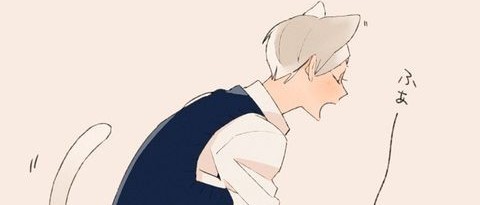
Pairing: Timeskip! (Model) Lev Haiba x femme! Reader
Warnings- CBT, dom Reader, a bit of power play, handjob.
A/n- This is my delayed contribution to the Hard at work Collab that I was really looking forward to until college say no😞. I'm sorry for the disappointing work.

"Miss y/n is ready to see you now", the sharp looking secretary politely gestured towards the classy mahogany door that opened to show the office of the current CEO of a high end fashion brand that was ruling all the gigantic billboards of Russia these days.
Today was the first interview, the first meeting infact that you allowed to get an over-all idea how this investment would go should you decide to work with him. The post as its brand ambassador was not yet given to Lev but his puffed chest and confident smirk would suggest otherwise.
He entered with the same unreasonable confidence that he carried since highschool, bright green eyes that seemed to sparkle when catching light and a haughty smirk.
Lev didn't missed a beat when he saw your table stacked with the magazines he was doing the front cover for.
" Amazing aren't they?!", His bubbly excitement surface in a second and it took a few moments for you to register his child like response.
Even though you didn't judged him based on how he looked on the photos you still didn't expected him to be a himbo with no sense of self restraint. But he appeared to be oblivious to your shock and went on.
" This one was just a gig my sister got me when I was just starting out but I bet you can't tell me apart from a professional huh, oh and this one is-," he giddly pointed to one picture after another telling you all of their history and after a few minutes your patience ran out.
Shoving those magazines aside you got to the point.
" How far are you willing to go for this job?", A little suggestive based on the interpretation but you tested him anyway, eyebrows raising as if to urge him to respond.
" I'm not sure I understand.....", Seeing him genuinely perplexed you put your elbows on the huge glass table and rested you chin in your palms before speaking.
" One thing is clear to me and it's that you, Mr. Lev, are still an ameture who lacks experience. So how much are you willing to give to this job?"
" Well it should go without saying that I'm always ready to learn new things and tricks! And just because I'm young doesn't mean I'll do a sloppy job", his pout and way of speaking was crude but it had a certain charm. The kind of pureness that doesn't come by all that often and a sudden need to whip him into a shape you saw fit was already making its way into your head.
" Then let's start you lessons right away, shall we?", Leaning back on your chair you pointed at his clothes before speaking.
"Strip.", You thought he'd atleast argue a little first but at soon as you lifted your eyes he was already halfway naked. Your lips quirked in a natural smile, watching his sculpted body in the bright top floor of the office buliding. Not a shy boy atleast, you thought.
Living in the glamorous world of fashion you encounter more than a few people wanting to please you to get in your good side but this was one of the few instances where you felt like indulging in for yourself. And you had the power to get what you wanted and the person in front of you was just waiting for you to devour him at any given moment.
"You have pretty knees, all unblemished and unrealistically perfect. I'll try not to ruin them too much", with that you casually stood up from your leather chair and walked towards the last shelf of your office's mini library.
Without looking back you continued, " You see, Lev, if you want to really understand the inspiration behind my brand then you have to experience first hand submission. Afterall, it's made for women of the highest class and positions. The kind of women", Turning around you see him awkwardly covering his thick member,
" that doesn't bend for anyone". Lev atleast got the gist of your innuendo by now, but his habit of diving headfirst into an unknown situation was proving to be rather scary as soon as he saw you pull out a few metal and plastic items that appeared to be sex toys from the middle of the shelf lined with magazines and books.
"Hmmmmm, not bad", words of appraisal fell from your lips as Lev's toned body was displayed out in front of you to admire from an even more closer space, shamelessly so. From his pretty pink nipples to his equally pretty cock you drank in all his details before whipping out your gear.
"Well now, it's bigger than I thought..... This Ball stretcher might not fit afterall," eyeing his cock you quickly look over to the toy in your hand before deciding to givi it a try after all. As Lev saw you approach him with a frighteningly slow pace he backed up a little.
"Do- Do I really have to do this? I doesn't look like it'll fit!", His hesitant voice now contrasted with the self assured tone that he carried before and the helpless look in his emerald green eyes only made you want to play with him further, afterall, it wasn't everyday a mere model piqued your interest like he did and you didn't mind having a pet for entertainment purposes.
"Ofcourse. If you can't even handle this much then how do you intend to please the millions of women out there who like and endorse my brand?", Finally cornering him in a place you nonchalantly grab his balls to fit the toy in hand and soon his soft balls were under the metallic ring that stretched them nicely. He kept jolting at the slightest brush of your hands against his bare skin and you lightly slap his hardened shaft.
His moans were like little squeeks and it was starting to arouse you, the submissive nature of which encouraged your sadistic streak. Caressing his balls a little more you lead him towards the low coffee table.
"On your knees", on the plush carpet underneath, you asked Lev to show his cute ass.
Down on the floor, Lev bend forward until his face and chest touched the ground. His ass up in the air, like a piece of art his every muscle glistened in the morning light, illuminating his porcelain skin. You kneel down behind him to give his ass cheek a firm slap, making him jolt a little from the stinging pleasure, the metal rings wrapped around his balls adding to the impact.
It was adorable, how someone of his gigantic size and stature was now below you mewling like a kitten. You gently touch the sensitive tip of his cock, already hard and ready to be used as you wished. Grazing a thumb over his leaking precum you lubed your fingers enough to strok him without causing friction burns.
"How would you like it if I took a photo of you right now. Face down and ass up like a slut who just wants to cum?" Your authorative voice bommed in his ears and he was blushing all the way to his neck by now.
You disregarded the few incoherent sounds he made and grabbed his shaft and started stroking him roughly. In circular motion, your hands that barely wrapped around his thick cock moved up and down in a vigorous speed. You could feel him tremble beneath your hands, his member throbbing in your hand and the constant pleas to let him cum was a brilliant sight to behold.
His balls felt heavy due to the toy and Lev's orgasm equally intense left his entire body shaking violently. If the office walls weren't as expensively thick as they were his high pitched screams would've probably knocked out a few unsuspecting workers off of their seats.
The place below his softening cock was wet with his cum, the thick white fluid soaking through the fabric of the carpet and you could already imagine ordering him to lick it clean while you watched. The things you wanted to do to him. The things you wanted him to do to you but the train of you fantasies was soon cut short when you suddenly hear a knock on your door.
Your assistant called to remind you of your next appointment and a frown quickly made its way onto your face and you begrudgingly lift head, only to see his eyes still dazed from your previous session. He seemed like he was still alert enough to process the situation so you tried to push his limits a bit more.
Tugging him by his hair, you tilt his head back to look at his spent face, "Now let's get you dolled up for round two shall we?", His beautiful swollen lips formed a soft smile before speaking
" So I got the job right?".
#Haikyuu!!#haikyuu!! smut#hq!!#hq!! x reader#Haikyuu x reader#haikyuu smut#lev haiba#Haikyuu lev#Haikyuu lev x reader#lev x Reader#lev smut#my writing#hard at work collab#haikyuu scenario
132 notes
·
View notes
Text
Microscope
The telescope caused a stir in the intellectual world and so did the microscope.
The microscope also came under fire. Many medieval stars were reluctant to believe that what they were seeing was real. It took fifty years for this invention to become acceptable.
One of its major champions was Robert Hooke who contributed to biology as well as chemistry and physics.
He made some extraordinary observations with his own tools which he continued to improve.
In 1665, 30-year-old Hooke published a book called Micrography. There were 57 amazing drawings made by Hook.
For the first time, he introduced us to things like the body of a lice the anatomy of a flea the eye of a bee the sting of a bee. Ordinary animals can have such body parts was a shocking fact.
Insects have never been seen in such large size before. Just as Galileo shook the conventional idea by exploring mountains and valleys by telescope toward the moon so did Hooke's glass.
The year the book was published was the year of the plague in London which killed one in seven people in the population. And the following year, London was engulfed in a great fire.
But despite all this fuss, Hooke's book was read and became a bestseller.
Hooke's work influenced a new generation of scholars. Many people made fun of him for whom it was difficult to admit.
How can images viewed with a device be trusted? Thomas She'd will wrote a satirical play based on Hooke's pictures which made fun of his book and the pictures in it.
Hook was invited to watch the play. After a while he realized that he was the target of ridicule.
One person who had no doubt about Hooke's claims was Anton van Leeuwenhoek an amateur scientist.
And the clothes merchant had a business of clothes ribbons and buttons.
He did not go to college nor did he speak Latin which at the time was considered the language of science but he loved to read books and the book he liked was Robert Hooke's book that changed his life.
.. .. .. .. .. .. .. .. .. .. .. .. .. .. .. .. .. .. ...
At the beginning of the micrography was written how to make a simple microscope and Levinohouk had some experience in grinding lenses.
He used to inspect clothes but after reading this book he became obsessed with glass. Spend hours making new microscopes and observing them.
At first they repeated Hooke's experiments but soon overtook him. Hooke's microscopes magnified from twenty to fifty times, and his observations surprised members of the Royal Society.
In 1673 the Secretary of the Royal Society may have received a letter stating that an uneducated cloth merchant had made microscopes which were ten times more powerful than his.
Levinohock did this not with new technology but with skill.
In the same piece the lens was made of specially selected glass and special sand was selected the raw material of which he had obtained himself.
And installed it permanently for the study of everything and made new microscopes for it. Why did you do that He never said why.
Levinohock kept his methods secret and like Newton wanted to avoid criticism. They made more than five hundred lenses and no one knows exactly how they were made.
.. .. .. .. .. .. .. .. .. .. .. .. .. .. ... .. .. ..
When news of Leuvenhouk's work reached Britain the British and Dutch navies were shelling each other and the Anglo-Dutch wars were raging but he did not contact Oldenberg to contact Leuvenhouk and report his work to the Royal Society.
That's what Roca and Levinohock did. The accompanying note was an apology. I did it without any help and only out of curiosity. There is no other philosopher in my city who is interested in it so forgive my mistakes.
Levinohock's work was bigger than Hook's. Where Hook had seen the body parts of small insects Levinohook had seen creatures that were invisible to the naked eye.
I had seen entire colonies of such creatures whose existence no one could have imagined.
He called these animals animal cubs. Today they are called microorganisms.
.. .. .. .. .. .. .. .. .. .. .. .. .. .. .. .. .. .. ..
In fifty years Levinohock has written hundreds of letters to the Royal Society most of which are preserved.
Olden berg translated them into English and the Society published them.
His work shocked the people. A drop of water from a pond inhabits a whole world of animals that is hidden from our view was the big revelation.
Levinohock turned his microscope to the human tissue. Look at the capillary of the blood, look at the sperm.
They showed us how we became. And that is the design of all living things.
Like Hook there were critics of Levinehouk who thought it was all a misrepresentation. In response Levinohouk presented an affidavit signed by eyewitnesses to his observations.
He also called the religious leader of the city to tell everyone in the assembly after seeing it.
Most scientists believed in Levinohock. Hook repeated parts of his research himself.
As word spread people from all over began flocking to Levinohock's store to see their small animals.
Charles II of Britain and Peter the Great, Tsar of Russia were also among the guests. It was a great success for the clothes shop owner.
Levinohock died at the age of 91.For the next one and a half centuries no bacteriologist came to compete with them. Before his death he had his last two letter. Translated into Latin by the Royal Society. And also a gift. It was a collection of the best microscopes he had ever shown to anyone.
Today there are a few of them that work. One of them was auctioned off in 2009 for 312,000.
In his long life Levinohowk helped establish many fields that later became biology.
Microbiology, Embryology, Entomology, Histology. His letters are considered to be the most important correspondence in the history of biology.
Like Galileo in physics and Laos in chemistry he began the scientific tradition in the field of biology.
.. .. .. .. .. .. .. .. .. .. .. .. .. ...
Galileo of Biology was in a sense Hook and Levinohock who opened new worlds with the help of lenses.
Biology also needed a number of Newtons to explain all this. And he was a scientist born in 1809.
2 notes
·
View notes
Photo


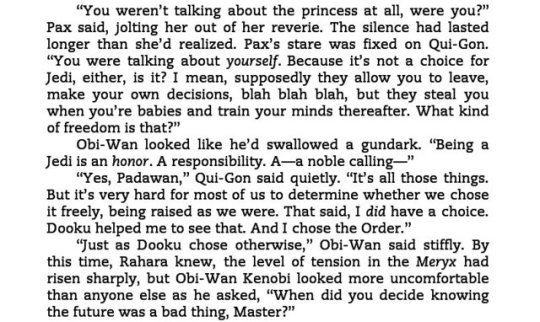

Master & Apprentice | by Claudia Gray I have come around to actually appreciating this conversation in this book, despite that of course I want to yell about how you wouldn’t say this about any other group a child is born into, you wouldn’t say this about any other culture that a child is brought up with, It would be like saying “you didn’t get to choose” to a child of Alderaan or Naboo or Kashyyyk or Mon Calamari or Ryloth or Mandalore, all of which have their various cultures and religions both! The children of those cultures know they can leave, just as it’s made very clear to the Jedi children that they can leave, that other Jedi have left, and it’s fine. Dooku: Jedi Lost makes a point of how Yoda and the other Jedi specifically teach younglings about the Jedi who’ve left, they’re explicit about how, no, they’re not all going to the dark side, that some of them leave to just go be farmers. So why don’t the Jedi ever fire back on this? Part of it, I suspect, is the out-of-universe reasoning that a lot of people don’t think of it in those terms (and I’m not yelling at anyone who disagrees with me on this or anything!), so it doesn’t get written that way, despite that I think the Jedi very much would think of it that way themselves. Everyone is born into whatever their parents/community practices, whether that’s a specific culture/religion or the lack of a specific culture/religion. The Jedi are no different in that (other than that their religion is a provable, tangible thing, like, the Force absolutely exists and they can demonstrate that) and they’re just as free to leave as anyone else is free to leave their religion as well. And part of why I came to really appreciate this book’s presentation of it is that Rahara says it as well--”Nobody chooses how they were born.” But there’s another thing going on here--and it’s something that’s been woven into the background of various Jedi-set stories--that the general public didn’t really understand the Jedi and often hated/feared them. [x][x][x] The Jedi rarely seem to try to argue about this because it often seems pretty fruitless an endeavor, that instead of arguing about it (with people they’ve just met and will probably never see again) they just let it pass because it’s not a fruitful cause, when the galaxy keeps throwing this at them over and over again. The Jedi, as a group, tend to let their actions speak for them, rather than trying to get into debates about it--which is one of the big things that I think contributes to their downfall, that it isn’t that they didn’t interact with the public or they didn’t have outreach centers or they didn’t go help people, but that they didn’t really play the political game, that they assumed their actions would speak for them, their history of service would speak for them, and didn’t realize how powerful and effective propaganda really is, when wielded so actively. And, honestly, after 2016, that’s a lesson I never wanted to learn, but had to, that people will take what others say about someone at face value, rather than actually looking at the actions of the person, that propaganda swayed far more people than we realized it could, by those who actively wielded it, and it’s not something I think I could have fathomed on that scale before it happened, because I believed too strongly in the world being good. So, like, I have a lot of sympathy for all the stuff that’s getting tangled up into the bigger picture (not necessarily in this book, but with the Jedi and the GFFA as a whole) and why the general public seems to misunderstand the Jedi a lot, in that galaxy of theirs. (And, frankly, this is setting aside all the ways in which the galaxy was dangerous for Force-sensitives just for being born that way.)
221 notes
·
View notes
Text
On the Waterfront (1954); AFI #19
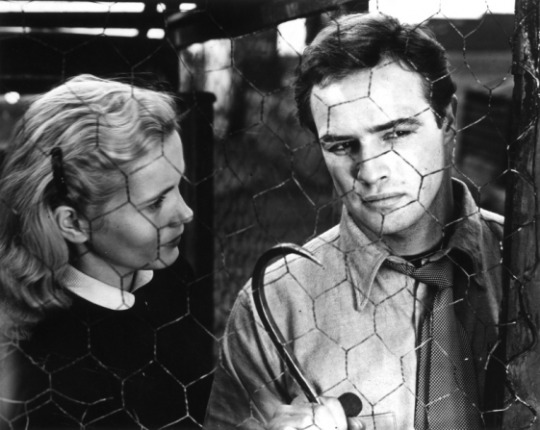
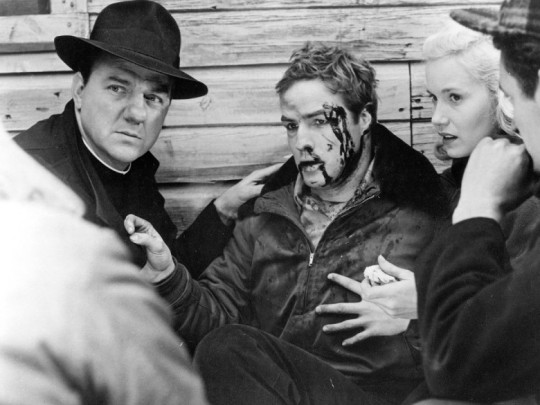

The next film on the AFI top 100 under review is the award winning crime drama, On the Waterfront (1954). This film was nominated for 12 Academy Awards and picked up 8 including Best Picture, Best Actor, Best Director, and Best Screenplay. The film is based on a series of articles in the New York Sun from 1949 that depicted the condition of the eastern seaboard and all the corruption that was involved at the time. I did a lot of historical digging for this film and realize how important the accuracy was and it seemed pretty spot on. Before I get into story, let me give the standard announcement...
SUPER SPOILER WARNING!!! I TOOK A LOT OF NOTES DURING THE FILM AND THIS WILL SPOIL THE ENTIRE THING!!! WATCH THE MOVIE FIRST AND THEN COME BACK AND CHECK OUT THE ARTICLE!!!
The film starts out with the murder of a man named Joey Doyle. Terry Malloy (Marlon Brando) calls to Joey’s window at night to have him meet up on the roof concerning a pigeon. We see that Terry is with a bunch of gangsters who are waiting up on the roof for Joey. The audience doesn’t see the actual meeting, but a person falls off the building a couple seconds later and it is assumed that Joey is dead. It seems that Terry was not aware that Joey would be killed, he thought they were going to rough him up or intimidate him.
Terry is not put out too much because he goes to a local pub right after and we meet the local crime boss. Johnny Friendly (Lee J. Cobb) is a stereotype mob boss who runs a tight ship and could snap at any moment. It is an awkward scene where one person in the room is having fun and everyone else is nervously waiting for something to go wrong. Friendly’s right hand man is Terry’s brother Charley (Rod Steiger) and Friendly has a fondness for Terry because of the relation and also that Terry used to be a boxer. Before the night is over, Terry is given a stack of cash for his help with Joey and the promise of a cushy job on the dock the next day.
The next morning, a group of people look over Joey’s body on the street and his sister Edie (Eva Marie Saint) is understandably angry about the event. She shames her father and the other workers for not saying anything and she yells at the local priest (Karl Malden) for not being more involved. She wants to get involved and help her father get work so she goes down to the docks with the priest to see what the situation is really like. People attached to the mob are given preferred treatment (including Terry) and all the other workers have to scramble in hopes of getting work. The priest sees the corruption and decides to hold a union meeting in the church to encourage the workers to speak out against Friendly to improve the working conditions.
A group of dockworkers not part of the corruption meet at the church, but all remain quiet. The stay “D & D” (deaf and dumb) to what is going on so that they don’t get hurt. Joey is sent by Friendly to the meeting to see if anybody talks and he sits in the back. It seems apparent that he is there to intimidate the others into remaining silent. Before the meeting is officially over, a brick comes through the window and a bunch of gangsters pound sticks on the ground, waiting for the workers in the meeting to leave. Most everyone is attacked and beaten on the way out except for the priest, Edie, and Terry. The priest convinces one of the workers named Dugan (Pat Henning) to talk to the Waterfront Crime Commission to prevent another attack like this.
Dugan agrees to testify and we move forward to the day before he is supposed to go in front of the court. He is working on unloading a ship of Irish whiskey and an “accident” occurs in which a pallet of booze falls on Dugan, killing him. The priest comes to give last rights and gives an impassioned speech to the surrounding workers about how keeping quiet is a crucifixion and good men would not let this happen if they could stop it. Some of the gangsters through garbage at the priest while he is talking, but he continues on and Terry starts to feel guilty about his part in the deaths and injustice. He punches one of the enforcers who is going to throw something and this does not go unnoticed. In a very symbolic image, the priest rides a crane up out of the ship and ascends out of the hold like an angel ascending towards heaven. Very cinematic and full credit to cinematographer Boris Kaufman for this fantastic shot that no doubt contributed to his Oscar win for his work on this film.
Terry starts to fall for Edie and considers testifying against friendly. He knows, however, that she will learn of his connection to her brother’s death and fears show will hate him. Friendly gets wind of Terry’s connection with Edie and sends Charley over to convince him to not testify. In a very poignant scene, Charley and Terry talk in a taxi and Charley tells him that he needs to promise not to squeal or Charley will take him to the docks to be executed. Terry says that he can’t live being a bum. He used to be a prizefighter and Friendly had convinced him to take a dive during a fight and all his potential was wasted. It is the famous “I could have been a contender. I could have been a somebody” scene. Charley let’s Terry go and goes in to stall so the Terry can escape and instead Charley is killed and left hanging from an ice hook in an alleyway as a message to Terry.
This goes too far and Terry goes to the local bar to shoot Friendly. Instead of the crime boss, Terry runs into the priest and is convinced to testify in court as a better form of revenge. He agrees and Terry identifies friendly in court as being corrupt and ordering the murder of both Joey Doyle and Dugan. After testifying, Friendly threatens Terry and says that he will never find work on the docks. Terry is shunned by all the other workers for squealing and only finds kindness from Edie.
Terry shows up the next day for work recruitment and every person there (including a random hobo) is given work except for him. Terry goes to confront Friendly and is summarily beaten by a group of gangsters. The dock workers see this and say that they will not work unless Terry is allowed to work as well. Friendly has lost his power over the docks and can’t kill Terry since he has already talked and is now being protected by the police. The priest shows up and tells Terry to stand up and lead the workers onto the ship, cementing the shift in power. A severely beaten Terry is helped up and he stumbles onto the boat followed by the rest of the works. The movie ends as the plank doors to the ship’s hull close.
Although the characters are sensationalized, the situation was very representative of what life what life was like on the East Coast docks during the late 40s and early 50s. This film is a time capsule for American life right after WW2 and a lesson concerning what can happen with complete corruption. Very fascinating from a historical perspective as well as an artistic one.
I have a little bit of an issue with Brando and his acting in this film. I do not think he is that good. He mumbles his lines like he does in every movie and it is apparent that he is a good actor but not that great at line delivery. Also, when I say he is a good actor, I don’t mean this film. He comes across almost whiny and conceited and I never really get behind the character. I freely admit that I don’t really like Brando in general as a person (at least from the stories I hear, I have never met him) and that might taint my judgment of his performances. I never bought him as a boxer and I never bought him as being tough. He is acting like a soft hearted bully, but it just doesn’t impress me. He got top billing and his name is bigger than the movie credit on the opening title cards, but I thought Karl Malden did a much better acting job. I am thankful for Brando’s contribution to creating method acting, but that doesn’t make this a great performance and I don’t think he deserved the Oscar.
Also, just like with The Godfather, Brando played a part that was memorable with great lines and won the award for Best Actor while the rest of the male cast who gave outstanding performances were relegated to Best Supporting Actor (three actors nominated in both cases) and came home empty handed. Brando kept getting quirky character roles in well written films and surrounded by incredible talent...and then he was given all the credit for the incredible result. I just don’t like that guy and I realize it is a personal bias. I just don’t like how he is given all the credit (and takes all the credit) for projects he was a part of. But moving on...
I again want to point out the cinematography for this movie because I am not generally impressed by this aspect of films, especially when they are in black and white. I think On the Waterfront, Citizen Cane, and Who’s Afraid of Virginia Woolf are all examples of how prop placement, camera angles, pans, and lighting can be used to tell a story beyond just the acting and dialogue. A well deserved Best Cinematography award for Boris Kaufman.
So does this film deserve to be on the AFI top 100? Yes. For the famous “contender” speech, the reflection of history, the visual storytelling, and the wonderful acting, it absolutely deserves a spot. Would I recommend it? Well...I would say yes but not for Brando. I was so bored by the part of Terry Malloy that I found many other things that I liked to get through the film. The first time I watched I was expecting this great performance and I was thoroughly disappointed. Watch the film for everything else besides Marlon Brando and you will be impressed.
#on the waterfront#marlon brando#karl malden#eva marie saint#elia kazan#crime drama#longshoreman#union#movie review#afi films#introvert#introverts
6 notes
·
View notes
Text
The Mighty Morphin Power Rangers Movie We Almost Got
https://ift.tt/3aurRlC
Mighty Morphin Power Rangers: The Movie is a cult classic amongst ‘90s pop culture enthusiasts and Power Rangers fans. Even with its fairly standard ‘90s adventure movie plot, wherein the Rangers lose their powers and have to go on a mystical quest to gain new ones, the film still sticks in the mind. Main baddie Ivan Ooze chews all the scenery, there are some impressive fight scenes, and the Rangers save the day by kneeing a monster in the balls. Yes the CG is dated, the story doesn’t hold up to some of the better episodes of the show, and it’s not in continuity with the series but if you want to have a movie night with friends of a certain age, Mighty Morphin Power Rangers: The Movie is a solid watch.
While many love the film exactly as it is, it didn’t go from script to screen completely unchanged. An early draft of the script we discovered, dated October 15, 1994, written by Arne Olsen and David Kemper (the final film credits Arne Olsen with a story by John Kamps and Arne Olsen) has many changes that if included could have made for a very different viewing experience. The script contains new characters, fleshed out backstories, altered scenes, and makes us question the long-standing belief that the people behind the film didn’t “get” Power Rangers.
This is by no means an exhaustive list of every single change from script to screen. There are hundreds of them throughout but we’re focusing on the biggest changes that add new context to the film.
Fleshed Out Backstories
Even though this film isn’t in continuity with the Power Rangers TV series there’s still a lot here for fans to dig into that offer clues to a much bigger universe happening behind the usual stories we’d get in the show. While the script doesn’t have the opening voiceover, which originally gave much of the backstory for Ivan Ooze, here the characters themselves deliver it.
Zordon tells the team that Ivan Ooze “rid entire cities of their adult populations, then twisted the minds of the kids into following in his evil path.” So Ivan’s luring of children and getting rid of their parents wasn’t just a one-off plan for this film, there was some precedent behind it! He further explains that a rebel faction of young people “known as the Order of Meledan” rallied against Ooze and lured him into a hyperlock chamber that was then buried deep underground.
Some of that was given in the movie’s original intro but it still paints a more detailed picture of Ivan. The Order of Meledan, long whispered about in hardcore Power Rangers fan circles, paints an intriguing picture. Later in the script Dulcea tells the Rangers how she knows Alpha and in doing so reveals more about The Order.
She describes it as an interstellar peace keeping force headed by “the finest commander in all the galaxy… Zordon of Altare.” (Yes, they misspelled Eltar throughout the script as Altare.) Zordon was more than a commander though, Dulcea calls him a “legend” and without him the universe would be “a very different place from what it is today.”
Read more
TV
Power Rangers: A Guide to the Multiverse
By Shamus Kelley
This is incredibly significant. Zordon’s backstory in the show was vague. We knew he had a physical form at one point and battled Rita but to get confirmation he was the head of a force of warriors? This is the kind of information fans always suspected before the 2017 film made it a central plot point and the recent Boom Studios comics began to address it. The film isn’t in continuity with the show (or the comics for that matter) but to know at one point Zordon was given more history and was all over the universe saving people, should give Power Rangers fans chills. We can only wonder if this build up of Zordon’s character was only to give added weight to this film or if they were laying the groundwork for further films to explore it.
Dulcea doesn’t directly mention what happened to The Order of Meledan but after “our enemies” were defeated she returned to Phaedos (where she resides in the film) and Zordon and Alpha moved on “to continue the struggle elsewhere.” Did they take The Order with them? Who else was a part of it? Questions we’ll sadly never get the answers to.
The script however does give us more details about “The Great Power.” In the film it’s mostly kept vague, a simple power source that gives the Rangers their suits back and allows Zordon to return from the dead. The script takes more time explaining it (which was likely cut out for pacing and time reasons) where Dulcea explains that it originated in another time and dimension, brought to Phaedos by the now all but extinct “Nathadian” race. They were the ones who built the stone monolith later seen in the climatic “Guardian” fight in the film and stored the power inside to keep it hidden from their enemies.
The Nathadians are continually brought up in the script, with the race actually being the origin of the term Ninjetti. During the team’s training with Dulcea (more on that later) she lays out that, in Nathadian, “nin” stands for “man” and “Jetti” stands for animal. Ninjetti is man and animal, together as one, “the highest state of being.” How does Dulcea know all this? She’s the sole living descendant of the race!
While the film itself gives us precious little about Dulcea and mostly leans on her past connection with Zordon. Here at least we get a bit about her culture and how that ties into the Rangers’ new powers. It makes Dulcea less of a plot device; she gets to be a person.
Perhaps one of the most fun backstory additions in the film is also tied to a changed scene. In the final film Alpha uses the last remaining power in the Command Center to transport the Rangers to Phaedos. In the script however they travel by a spacecraft that belongs to Alpha.
Hidden in the command center is “a Stinger PX-3000 with dual thunder-cams, long held to be the most reliable Interstellar Craft in the Galaxy.” Alpha relates that he arrived on Earth in the craft over four hundred years ago. Kimberly isn’t impressed, suggesting they swing by a car wash because it’s so dirty inside.
It’s a small beat but it’s fun and suggests that Alpha arrived on Earth independently of Zordon. Maybe the two parted ways at one point and he went off to have his own adventures. We know Alpha has karate chopping action, so maybe he’s the hero of a far off galaxy!
(Snoggle, who never made it into the finished film, can be seen all the way to the left.)
New Characters
While reading through the script I noticed that while the structure of it isn’t all that different from the finished film, a lot of sections were cut, likely for time or budgetary reasons. A few side characters didn’t make it to screen, one of which is the long rumored Snoggle. Glimpsed in behind-the-scenes photos and videos for years, Snoggle has held an air of mystery as a huge dropped part of the movie.
Read more
TV
Power Rangers and How It Adapted From Super Sentai
By Shamus Kelley
For anyone out there wondering what his point in the movie was, his role in the script isn’t that significant and he’s mostly there to be a sidekick to Dulcea. He’s described as “a helper, an anteater-like creature” who doesn’t speak English. His biggest contribution to the plot is lightly mocking the Rangers as they train with Dulcea.
Far more interesting is the never before seen Queen Tengu. Yes, while in the film the Tengu simply obeyed Ivan Ooze’s commands. here they have a leader. She’s created out of a bolt of energy from Ivan and is described as having a different color than the rest of the Tengu along with “glowing red eyes.” It’s also specified that she speaks with “squawk subtitles.” She gets to play an integral part in a cut fight scene we’ll get to later.
Also, Fred’s mom is in script. She doesn’t do much but hey, she’s there for the lead kid character to worry about!
Changed Scenes
Most scenes in the script have at least a few differences, changed words, small bits of description that didn’t make it into the film, etc. We’re going to focus on the biggest changes, scenes and moments that would have made a significant difference to the film.
Remembering the Cast Changeover
Kimberly’s mini speech about how Zordon has been like a father to them all is in the scene just after Ivan attacks him. Her heart to heart with Tommy also take place not on Phadeos but on Alpha’s old ship as they travel to the planet. The other Rangers join in on the conversation with Aisha’s touching addition, “you know, meeting Zordon… teaming up with all you guys… it’s the best thing that’s ever happened to me.”
Rocky chimes in with, “it’s the best thing that’s ever happened to ALL of us.”
It’s a great little moment that not only brings the team closer together but also acknowledges the then recent cast changeover that happened in the TV series.
Ninjetti Powers
The biggest changes though begin when the Rangers are given their Ninjetti powers. Instead of just a swirling light the Rangers put their hands in an urn. There they see and take on the shape of their animals, the costumes appearing as Dulcea describes their traits. In a bizarre omission most of the Rangers get flowery descriptions of their animals (“cunning and swift”, “agile and sublime”, etc.) Rocky doesn’t get any! Dulcea just says “Rocky, you are the Mighty Ape” and moves on. Ouch.
Adam’s now legendary line “I’m a frog” isn’t present in the script but a slight variation of it is. He simply says, “a frog” when given his powers. Dulcea at least tries to make it sound cool, calling the frog “the artful jumper.”
Added Stakes
There’s a bigger ticking clock added when the Rangers head to the monolith in the forest. Dulcea relays that once they cross the threshold to the inner sanctum they only have about two minutes to release the power or it’ll self-destruct, “causing a thermonuclear reaction of such magnitude that the entire planet will instantly burst into a billion flaming particles hurtling through space.”
That’s…. a lot. In the film we just had the threat of Zordon losing his life but here the Rangers themselves will bite it if they don’t unlock the power fast enough. If that idea was kept that would mean they couldn’t have a long fight outside the monolith so that’s probably why it was cut.
Tommy Is An Idiot
The scene at the monolith itself of course lasts longer than two minutes worth of screen time, with the Rangers all trying to find a way to unlock the great power. In the absolute funniest moment of the script, Adam suggests they have to break through as “our Ninjetti animals.”
Tommy takes this hilariously literally and the script delightfully describes how he “dives through the air, hits the monolith with a resounding crunch.” Don’t vote for dummy, am I right? For all of Tommy’s status as the most legendary Ranger of all time, in the show itself he’s actually pretty stupid. How he became a doctor I’ll never know.
Bringing Zordon Back to Life
The Rangers do finally unlock their powers thanks to a communication from Zordon just before the monolith explodes. He tells them to keep their spirits up which somehow makes the Rangers realize they have to master the spiritual side of their Ninjetti powers.
The team wins the day but instead of teleporting from Phaedos to the city as they do in the film, they instead go back to the command center. There the scene largely plays it as it did later in the film with the team using their new powers to restore the command center and bring Zordon back to life.
It’s hard to know whether this scene was shot in the film with the intention of it being used after they left Phadeos but was switched around in editing but eagle eyed fans might want to give it a watch again.
With the Rangers bringing him back to life Zordon gives the Rangers new power coins as “a reward for your amazing bravery” which will unlock their new Ninja Zords. No explanation is given for where the Zords came from which… is the most Zordon thing this script could do. He always had an extra Zord fleet just hanging around whenever the Rangers learned a lesson. Maybe the writers of this film understood Power Rangers more than we give them credit for!
The Final Zord Battle
The Megazord fight in the city goes for much longer than it does in the film, the CGI costs most likely preventing some of the wilder events the script describes such as the Megazord getting tossed into Angel Grove First National Bank and the Megazord delivering double punches, drop kicks, roundhouse hooks, and spinback kicks. Would have loved to see that PS1 cutscene Megazord try and pull those off!
Later in the fight Ivan grabs the Zord and takes them to “Westside Bluffs” where he tosses them off a cliff but of course Tommy saves the day by swooping in with the Falcon Zord and attaching himself to the back so they can fly. This is almost immediately undercut as the fight continues underwater. Ivan ends up landing in an active underwater volcano, which was, again, probably deemed too expensive to pull off with the limited CGI resources of the film.
New Powers
One of the most well known cuts from the film is that the Rangers were originally shown without the visors in their helmets. This was done to better convey the actor’s emotions during filming of the action scenes. The idea was thankfully scrapped but it’s prevalent in the script. Alpha tells the team he’s retro-fitted their helmets with new “Omni Scan devices.” We aren’t sure if this is just another power-up or if “Omni Scan” is just a fancy description for “we took the visors out of your helmet so I guess you have a slightly bigger range of vision and your identities are now completely exposed.” The Rangers go visorless again later in the film when they get their powers back.
The Rangers also get new individual powers. Billy has an “Audio Enhancer” that takes the form of an “Auto Phonic Receiver” that pops out of the side of his helmet. Rocky has a Power Tracker that’s basically a scope that snaps into place over his left eye. Presumably this would have been inside the helmet. This is an earlier version of the scanner he ended up using in the finished film.
Read more
TV
Power Rangers: The Unproduced Episodes
By Shamus Kelley
TV
Power Rangers: Ranking All 26 Seasons
By Shamus Kelley
Ivan Ooze also gets a few new powers of his own. Instead of the scene when he tricks the Rangers into thinking he’s a security guard and then morphs into his true form, in the script Ivan makes an even showier entry. The Rangers spot a “grotesque horned creature” that springs out of a cave and lands in front of them. It snarls, exposing long dripping fangs. Only then does it shape into Ivan Ooze. He then doesn’t unleash the Oozemen on the team but instead zaps six rats. Previously mentioned in the script, they’re transformed into “six hairy rat-beasts.”
These rats were built for the film but were scrapped for not being high enough quality. However, they did find a use when filming on the movie went over schedule and they had to shoot episodes of the TV series in Australia (these scheduling issues caused several planned episodes to be scrapped and lost to time, which you can read more about here). The rats were deemed good enough for the show and appeared in the “Return of the Green Ranger” mini-series.
Back in the film, Tommy gets to show off a new power when he shoots laser blasts from his eyes. Saba, called the “Saba Saber” here, doesn’t get to save the day as he does in the film. When the rats are incinerated by Tommy’s blast they turn back into the six original small rats.
Even the Megazord gets a cool… old/new power? While in the film the Rangers just whip out a sword, here the script describes the Rangers summoning the “POWER SWORD.” It even drops from the heavens like in the show! This probably wasn’t supposed to be the original Megazord’s power sword… but what if it was? How much of an amazing callback would that have been? Mostly likely though it would have been the same design as in the film, just dropping from the sky like the original Power Sword did.
New Scenes
The biggest sequences cut from the film feature the Rangers training as Ninjetti. While in the film they were given the powers very quickly, here we get several extended training scenes with Dulcea. She trains each of the Rangers individually, walking along a bamboo log on her hands with Kimberly, lifting a giant boulder with Aisha, fighting Billy with a whistling stick blindfolded, and Tommy flying through the air from a rope. Adam and Rocky don’t get any training because I guess this script really has it out for those guys. Throughout all this Snoggle watches and is just a sassy little jerk to them.
These scenes were probably scrapped either for time or the fact that they’d been shot with Mariska Hargitay, who’d replaced Gabrielle Fitzpatrick after she was injured just before filming began. However after months of shooting the producers then decided to reshoot all of the Dulcea scenes which they brought Fitzpatrick back for. We’ve seen behind-the-scenes footage of Hargitay performing these scenes so perhaps they were deemed too expensive to mount again or simply cut even after the reshoots.
In what is perhaps the best idea cut from the script, the Rangers are all struggling to master their Ninjetti powers. Rocky, at least getting one moment of character, lashes out at Dulcea,
“I don’t even know why we came here in the FIRST place! Without our Morphin Powers, we’re just a bunch of TEENAGERS!”
Duclea doesn’t let this stand when she tells the team, “you have been relying on your Morphin Powers for so long that you’ve forgotten how to rely on yourselves.”
Read more
TV
Power Rangers Seasons We Never Saw
By Shamus Kelley
Putting aside that the Rangers regularly fight unmorphed, this is actually a really great idea. This could have made a fantastic arc to the film that would justify only having one morphed ground fight at the beginning. The Rangers learning they need to be powerful even without their powers could have been a great test of their characters. By undergoing this training they’d realize the value in not just relying on their morphed abilities. This lesson isn’t really stressed throughout the script but it’s still an absolute gem of an idea I wish had been expanded.
Later during a new action scene that replaces the bone dinosaur fight; the team goes up against the Tengu Queen. This fight takes place near a chasm, with the Tengus blocking the team’s path across a tenuous rope bridge. The Rangers get to show off their new skills and even deliver some groan inducing one-liners such as “pheasant dreams!”
In a move directly ripped from the show, the Rangers can only defeat the Tengu by aiming for their beaks. Z Putties, much? Adam gets his moment to be cool when he defeats the Queen Tengu by leaping toward her, looking her dead in the eyes and quips, “polly wanna cracker?” This is how he defeats her, I kid you not.
This fight is the main action set piece for this part of the film. We don’t get the “Guardian” warrior fight outside the temple. While those designs would be missed it at least keeps the Tengu a bigger threat in the film than simply being blown up by Ivan.
The film ends not with a display of fireworks but with perhaps the cheesiest scene in the entire script. The Rangers are in the command center and Alpha holds up a camera and asks them to say cheese. I’ll just quote the description of the rest because it’s perfection.
The kids share amused looks and all together they LEAP INTO THE AIR, PUMPING THEIR FISTS UP VICTORIOUSLY.
“POWER RANGERS!”
WE FREEZE FRAME.
Okay, the writers of this script DO understand Power Rangers.
Was The Script Better Than What We Got?
With all these changes in mind, would the movie have been better if this draft of the script was left intact? Not really.
In isolation some of these changes are fascinating but taken as a whole the script really isn’t that much better than the movie we ended up getting. Yes some of the little additions of lore are fascinating for Power Rangers fans but they don’t add much to the story. The movie still doesn’t have a character arc for any of the Rangers or the rest of the cast for that matter. It’s a generic 90’s adventure movie with the Power Rangers mixed in.
It also suffers from desperately trying to give all the Rangers something to say in every scene they’re in. While I appreciate the sentiment, this leaves large chunks of the script dedicated to giving each Ranger a line of dialogue whether it’s needed or not. That dialogue is also completely interchangeable. No work has been done to try and distinguish how each of the Rangers talk (you could say the show had this issue too). They’re all just generic heroes, except for the odd smart guy line from Billy or heartfelt declaration from Kimberly.
Without that the movie just moves from set piece to set piece, only wringing emotion out of Zordon’s near death which is undercut by his revival before the Megazord climax. The filmmakers made the right call by placing this scene later on.
But if we’d gotten this script as is it’d still maintain its cult classic status. Power Rangers was an absolute juggernaut at that point in entertainment and that alone would earn it a warm place of nostalgia in fans’ minds. Yeah it’s a sloppy movie but who cares when you can watch (or read it) and get that same feeling you had when you saw it for the first time as a kid.
But for real, why does this script hate Rocky so much?
The post The Mighty Morphin Power Rangers Movie We Almost Got appeared first on Den of Geek.
from Den of Geek https://ift.tt/2PTn4AK
1 note
·
View note
Link
Steve Hall, who retired from the CIA in 2015 after 30 years of running and managing Russia operations, said that the substance of the lies and alleged false statements documented by Mueller paint a broad picture with serious implications.
“In my view, those lies — what was lied about and under what condition the lies were told — contribute to a counterintelligence pattern that has begun to emerge pointing to senior members of the Trump team being involved with the Russians,” he said.
They lied to the public for months before Donald Trump was elected — and then repeatedly after he took office.
They lied to Congress as lawmakers sought to investigate Russia’s attack on American democracy in 2016.
And they lied to the FBI, even when they knew lying was a crime.
In indictments and plea agreements unveiled over the last 20 months, special counsel Robert S. Mueller III has shown over and over again that some of President Trump’s closest friends and advisers have lied about Russia and related issues.
On Friday, Mueller laid out a new allegation: that longtime Trump confidant Roger Stone lied to Congress and obstructed its probe of Russia’s interference in the 2016 campaign.What Roger Stone’s indictment means for the Russia investigation
Trump and his associates have dismissed the serial deception as a sideshow that has little to do with the central question of the Mueller investigation: whether his campaign engaged in a criminal conspiracy with Russia.
Following Stone’s indictment on Friday, Trump attorney Rudolph W. Giuliani scoffed, “Another false-statement case? God almighty.”
But it is unclear if the special counsel shares that view. While Mueller has not accused any American of criminally coordinating with Russia, the lies meticulously unspooled by his prosecutors over 20 months have not been mere quibbles.
They have documented various falsehoods by Trump advisers that masked efforts by people in his orbit to develop inroads with Russia and leverage that country’s hacking of Democratic emails.
The remaining question — for both Mueller’s team, as it works on a final investigative report, and for the American people — is why.
Did the president’s men lie to protect a still-hidden dark secret about the campaign’s interaction with Russia, engaging in a broad effort to obstruct the probe — one that included perhaps even Trump?
Did they lie to avoid diminishing Trump’s victory by acknowledging Russia played a role in his election?
Did they each lie for their own reasons, taking their cue from the president — who has told many whoppers of his own, including about Russia?
Trump’s former campaign chairman, deputy campaign manager, former national security adviser, personal lawyer and a campaign foreign policy adviser have all been accused of lying to investigators exploring Russia activity.
In their new indictment against Stone, prosecutors said he lied to Congress about his efforts to learn about WikiLeaks’s plans in 2016 as the group was publishing Democratic emails allegedly stolen by Russian operatives.
Stone falsely told Congress that he never discussed his efforts with the Trump campaign and never asked intermediaries to communicate with WikiLeaks’ founder, Julian Assange, Mueller’s team alleges.
Stone has denied the charges and promised to fight in court. “Perjury requires both materiality and intent,” he said on CNN Friday night. “There is none.”
“Secondarily, where’s the Russian collusion?” Stone added. “Where is the WikiLeaks collaboration? Where’s the evidence that I received anything from WikiLeaks or Julian Assange, and passed it on to Donald Trump or the Trump campaign?”
Trump echoed that message himself.
“Greatest Witch Hunt in the History of our Country! NO COLLUSION!” the president tweeted after Stone’s arrest.
Legal experts noted that the alleged lies are significant in their own right.
“Time and time again, elected officials and government officials have exhibited a belief they simply can say what they want in a high-profile investigation, and do so with impunity,” said Jacob S. Frenkel, a former attorney in the independent counsel’s office now in private practice at Dickinson Wright.
Some Trump friends said they are confounded by Stone’s alleged actions.
“If he had told the truth as alleged, there wouldn’t have been an underlying crime,” said Christopher Ruddy, chief executive of Newsmax. “There would have been no crime. They would have had to try and find other stuff.”
The Stone indictment does provide new details that nod at one of Mueller’s central inquiries: trying to determine whether anyone in Trump’s orbit coordinated with Russia or WikiLeaks.
In Friday’s filing, prosecutors lay out efforts by both Stone and Trump campaign officials to learn more about what WikiLeaks had in its cache in the summer of 2016 — actions that occurred after Russia had been fingered as a likely culprit behind the theft of the Democratic Party emails that June.
Still, the mounting false statements charges collected by Mueller do not speak to the question of criminal coordination between the Trump campaign and Russia, some analysts noted.
“I think there is some theory under which you could include them in such a conspiracy, and I wonder why not,” said Barbara McQuade, a former U.S. attorney. “Is it that they don’t think the evidence goes that far? Is it that they think this conduct does not amount to a conspiracy to defraud the United States and it is instead dirty, political tricks?”
Steve Hall, who retired from the CIA in 2015 after 30 years of running and managing Russia operations, said that the substance of the lies and alleged false statements documented by Mueller paint a broad picture with serious implications.
“In my view, those lies — what was lied about and under what condition the lies were told — contribute to a counterintelligence pattern that has begun to emerge pointing to senior members of the Trump team being involved with the Russians,” he said.
Hall said the country needs to take step back from a narrow conversation about the political and even criminal ramifications of each Mueller indictment. “We’ve got to be looking beyond who gets a parking ticket or even a few years in prison,” he said. “What about the bigger picture? This was Russia, attacking the United States.”
The deception by Trump advisers that has led to guilty pleas so far does have a common throughline: Much of it centers on their interactionsabout Russia.
Trump’s longtime personal attorney Michael Cohen admitted lying to Congress about efforts to build a Trump real estate project in Moscow during the campaign — at a time when then-candidate Trump claimed he had no business ties to Russia.
Cohen also lied about seeking help on the lucrative project from one of Russian President Vladimir Putin’s closest advisers. Trump had said no one in his orbit had contact with the Russian government.
Former national security adviser Michael Flynn admitted he lied — first to Vice President Pence, then to the public and finally to the FBI — about whether he had spoken to a Russian envoy in December 2016 about sanctions imposed by President Obama as punishment for Russia’s campaign interference.
That lie came as investigators were working to understand why Russia, whose top foreign policy goals include undoing U.S. sanctions, fought so hard to help elect Trump over Democrat Hillary Clinton.
Foreign policy adviser George Papadopoulos has admitted lying about his contacts with a professor who gave him early warning in April 2016 that Russia held thousands of Clinton emails.
Prosecutors have said former Trump campaign chairman Paul Manafort has continued to lie even after pleading guilty to two conspiracy charges, which included lying to the Justice Department. His latest lies, they have said, involved details of his campaign interactions with a Russian employee who the FBI has assessed has ties to Russian intelligence.
As they wait for Mueller to finish his investigation, Democrats in Congress are likely to focus on the president himself and what he knew of the lies.
On Friday, Rep. Jerrold Nadler (D-N.Y.), the chairman of the House Judiciary Committee, tweeted: “Roger Stone, Paul Manafort, Michael Cohen, Rick Gates, Michael Flynn . . . What did the President know and when did he know it?
Some legal analysts said the charges do not appear to be building to a criminal case against the president.
The lying “certainly alerts you to the possibility of kind of obstructionist conspiracies,” said James M. Trusty, a former Justice Department organized crime chief now in private practice at Ifrah Law. But, he added, “at the end of the day, it looks like people are making independent, individual choices that are landing them in hot water. I think it’s the kind of thing that the Mueller probe doesn’t want to ignore . . . but the indictments themselves aren’t moving the case forward.”
The number of lies documented by the special counsel could also undercut Mueller’s efforts to make a broader case by hampering the effort to sort truth from fiction, some longtime Trump associates said.
“In Trump world, everybody lies. Everybody doesn’t tell the truth. At the end of the day, they are all lying. I don’t know how Mueller can believe anybody,” said Louise Sunshine, a longtime executive with the Trump Organization.
Trump allies say the president knows that many of the people around him are not trustworthy — and believes he can use that to his advantage if any of his onetime aides attempt to pin their wrongdoing on him.
He has instructed Giuliani and his other lawyers to question the credibility of anyone who attacks him, according to White House aides who spoke on the condition of anonymity to describe private conversations. After Cohen, Trump’s longtime personal attorney, pleaded guilty, the president on Twitter called him a “rat” who “makes up stories.”
Sam Nunberg, a former Trump aide, said he believed that people around Trump lied to investigators because they were trying to make sure their version of events lined up with lies the president was telling to the American people.
“They all conspired,” he said, “against themselves.”
Phroyd
32 notes
·
View notes
Photo

LOADING INFORMATION ON JAWBREAKER’S MAIN DANCE KWON SOHEE...
IDOL DETAILS
STAGENAME: Say CURRENT AGE: 23 DEBUT AGE: 17 TRAINEE SINCE AGE: 15 COMPANY: KJH SECONDARY SKILL: Variety
IDOL PROFILE
NICKNAME(S):
bunhee (번휘) : it’s a play word on her name (sohee) and bunny, given by fans because they think her features resembles the look of the said animal.
strawberry princess (딸기공주) : it’s a known fact to fans that sohee loves strawberry so much, so they started calling her strawberry princess since then.
food goddess (식신) : despite having a small body, sohee has a big appetite and doesn’t gain weight easily, in which why fans call her food goddess.
INSPIRATION: despite always being interested in dancing, sohee had never thought of becoming an idol until she was scouted at the age of fourteen. at first she only became a trainee to run away from her mother’s high expectations at home, but when she saw vixen performing on tv, they managed to inspire sohee to become like them one day. SPECIAL TALENTS:
dancing genius : besides her ability to do a freestyle dance on the spot, sohee can also repeat a choreography almost accurately after seeing it for the first time.
flexibility : sohee started dancing with ballet at the age of four, so she has a pretty flexible body and is able to do tumbling and splits very well.
aegyo queen : due to her baby face and sweetheart image on screen, sohee claims to be the best when it comes to aegyo and doesn’t mind doing it on variety shows.
NOTABLE FACTS:
she can speak korean, english and japanese fluently, and a little bit of chinese.
she is known to be a huge fan of ariana grande and heaven.
she is proven to have a strong heart, for that she’s not easily scared.
she is said to be the best among her members when it comes to variety.
IDOL GOALS
SHORT-TERM GOALS:
upon discovering her variety presence not too long ago, sohee strives to do better in variety shows. she hopes to explore more about dancing at the same time, wants to be able to master different kinds of dance. besides that, she also wants to try creating choreography that can be used for jawbreaker’s discography, thinks of it as a process of learning until she’s able to contribute something for the group. sohee has recently been into filming and making videos too, so she would love to open her own youtube channel one day.
LONG-TERM GOALS:
sohee wants to be acknowledged as one of the best dancers (if not the best) in her generation, besides hoping that she could become an inspiration to those who want to pursue dancing in the future or even be an idol. she aspires to be aspired
IDOL IMAGE
it’s not hard for singularity to figure out how they wanted to market kwon sohee. despite the fact that she could easily adapt to any kind of concept given to her, they decided to go with the sweetheart, girlfriend material image for sohee. she carried it around ever so proudly — after all it’s something that she has gotten used to back at home, given how much ‘training’ her mother gave her since she was young, hoping to turn the little girl into the perfect daughter when she grew up. due to her upbringing, sohee was still a tad bit obsessed with the idea of being perfect at first, so she tried to stick with what singularity had decided for her all this time. being apart of her.oine almost felt like playing russian roulette.
sometimes their release was received well by public, but other times the girls barely got to do much if their comeback flopped. when her.oine started to become unstable, singularity decided to push sohee into doing variety shows, told her to forget being sweet and nice for now. so she did, complied with their request and went all out on variety shows. that’s how she came to learn that she’s good at entertaining the viewers with her silly acts and witty remarks, found it more easier to gain attention from public that way. thanks to her strong variety presence, people wanted to know more about her.oine and eventually became their fans.
after the girls came back as jawbreaker, kjh still keeps her image as the funny girl next door of the group. sohee loves doing variety shows, but seeing how the spotlight isn’t entirely on her anymore now, she decides to find her way into dancing again. she has only focused on doing variety and getting the group known back then when they were still her.oine, so now that they’re a tad bit stable after the whole rebranding thing, sohee wants to be taken seriously when it comes to dancing. kjh is willing to give her that opportunity and encourages her to join dancing shows to prove her worth, pushes her to show the world what she’s capable of all this time, wishes to bring out the mature side of kwon sohee.
IDOL HISTORY
little sohee was so full of love and kindness. she grew up in a loving family, in a house that felt way too big for the three of them. she liked to believe they were picture perfect — at least that’s what her mother told her, despite how withdrawn her father could be at times. her mother was always so supportive, so loving, so cheerful. it’s hard to tell if she’s ever tired of smiling, for that she had always looked like she’s happy all the time, even if her father might not seem as happy. he must have been tired working, her mother would say so she would stop asking, and for years she believed her words. maybe work was just too much for him.
at the age of four, sohee was already learning more than a child her age was supposed to. her mother sent her to as many classes as she could, wanted her to master a lot of things by the time she’s old enough to take over the world. sohee complied to her mother’s plan, believed that everything she did was for her own good. she learned ballet, took a few language lessons, attended music class, trained for tennis and swimming. sohee was sent to a prestigious school since she was young and expected to be the best among her friends, causing her to only care about her studies and achievement rather than enjoying school life.
by the time she was eight, two strangers suddenly showed up at home and her father claimed them as family, much to her mother’s surprise. the woman grew mad and sohee had never seen her mother so upset — it didn’t take her long to figure out what had happened, why her father brought them home, and why she had to called the little boy her brother. her mother began to plant hatred in the little girl’s head since then, reminded her that she shouldn’t give the boy and her mother a chance to live peacefully in their house. sohee began to despise them for coming here out of nowhere, for wrecking the harmony in her family all this time.
there was only rage and hatred for teenager sohee now. it didn’t help that her father always pitted her against the boy, wanted them to prove that they could be better than the other. everything was a competition for them, and while sohee really wanted to gain her father’s attention back, she started to grow tired of the high expectations thrown at her every single time. the pressure coming from her mother had only made things worse, for that the woman clearly wanted her daughter to be the better child in the house, so she pushed and pushed sohee until she could no longer breathe. for the first time sohee managed to let it all out on her mother, managed to tell her that she didn’t want to do this anymore.
dancing was her only way out of this misery, even if it’s just for a while. her dream was to become professional dancer one day, but of course her dear mother was against it, said it was too childish of a dream for someone who had a potential to be something bigger. she didn’t have to worry about it, her mother said, she was going to inherit the family business in the future and that’s all she ever needed to do. it didn’t make her feel better though. but little sohee used to think she couldn’t be anything else than that, because who else was going to do it if not her? her mother was so sure sohee was going to be the heiress until the boy came along, so now she had to work harder to make sure her little girl got what she deserved.
truth to be told, sohee didn’t really like the idea of being a heiress. although at times she did feel defeated by her brother, her mother was always there to motivate her to be better — sometimes she wondered if her mother knew that she wasn’t much of a help in such situation, that she only made things worse for sohee by putting more pressure for the young girl to be the best in her father’s eyes. she started to care less about those high expectations when she turned thirteen, already grew sick of being told what to do and what to not do with her life. her mother clearly wasn’t happy with how she turned out, knowing that they were going to lose the family business to the boy if sohee kept on acting recklessly.
she had never wanted freedom so bad. sohee was fourteen when she was scouted by someone who worked for singularity, a new entertainment company in need of talented girls to debut their first group. the idea of being an idol didn’t appeal much to her back then, but knowing that she could stay away from home and dance for a living, sohee was tempted to accept the offer. she knew well her mother wouldn’t be too happy to find out about it, especially when she’s still obsessed to make sohee the heiress to the family business. after a whole year of persuading her demanding mother, she finally agreed to let sohee go (albeit not so willingly) and she started training under singularity when she was fifteen.
for someone who rarely had a hard time in her life, sohee felt like she could die from training. due to the fact that she used to attend a dance academy prior to training, she was often praised for her impressive dancing skills. she didn’t take training seriously until vixen made their debut — the moment she saw them for the first time on tv, she vowed to herself that she wanted to be like them one day. vixen managed to spark motivation in sohee to become an idol, and since then she worked really hard during those long practice hours until she eventually made it to the final lineup for singularity’s first ever girl group. she was granted the main dancer position, given that she had the best sense of rhythm among them.
she could never forget the day she finally debuted with her.oine. her mother wasn’t there to cheer for her, she didn’t even receive a congratulatory message from her that day. what else could she expect? sohee knew she had disappointed her mother for leaving, for choosing to be an idol. she spent two years of training without her family support, and she had never felt more lonely than she ever was during that time. thankfully she had her girls, who had managed to stick with her through ups and downs in their journey. sohee began to enjoy life more this way, when she didn’t have to worry about messing up her mother’s plan or if she was never good enough to be seen as the perfect daughter for the kwon household.
sohee became more open minded and free spirited upon debuting. she started to value friendships more than trying to outdo everyone and be the best — sure, she still had that competitiveness in her, but not as much as she did back at home. she learned to accept that it’s okay if they weren’t the best, because as long as they were happy with what they were doing, nothing else could matter more. sohee felt like she was missing out on great things growing up, considering that she never had the chance to make many friends or do anything that she wanted to. everything was planned by her mother and she had to abide by her rules, causing sohee to depend so much on her, not know what to do when she was left alone.
she was taught to be independent now that her mother was no longer by her side, and she wasn’t sure if she liked it. no, she didn’t regret choosing this life — after all becoming an idol felt a lot easier than trying to win her father’s heart to become the heiress, so sohee would never want to trade this life for anything else right now. although her mother wanted nothing to do with her anymore, sohee still sent her messages and came home to visit her sometimes when she didn’t have to work. if this was what she had to sacrifice for wanting to do what she wanted in her life, in which she deserved to, sohee would rather live without her mother.
her.oine was doing just fine, but there were times sohee wished they could have had more schedules to attend to, especially when they weren’t promoting. for the first two years she didn’t mind it that much, still thankful that they had more free time to waste compared to other groups due to their low release rate. her.oine only had a comeback once in a year, making it hard for fans to keep waiting for them to release new music. due to her bright personality, singularity finally pushed sohee to do variety during late 2015, made her do more than just aegyo and the whole girlfriend material thing. surprisingly it turned out well for sohee and the her.oine girls, for that people loved her silly acts and witty remarks on variety shows.
singularity saw it as a way to promote her.oine better to the public, so they began to send sohee out to do variety more often, tried to shed off her sweet, innocent girlfriend material image. sohee didn’t mind. she even loved it, found a liking in her newfound talent — she had always been the cheerful type anyways, so it wasn’t hard for her to crack jokes here and there just for the sake of the shows. her playful personality managed to gain attention from public, managed to get her.oine known. sohee loved being in the spotlight, even if it meant she had to work harder than the other girls during the year. it felt lonely to do things without her members sometimes, but she didn’t want them to live in the shadows either.
after all sohee was never the type to sit still and do nothing for a long time and spending her time practicing all the time didn’t feel as exciting anymore now, so why not just go out and do as many variety shows as she could, right? if that’s what would get her more well known, sohee wouldn’t even mind not being able to rest due to the busy schedules. it’s not something she faces often anyways, considering her.oine never really went on shows other than the music ones. but that’s only if they’re promoting, and if they don’t? they would just have to rot in the basement waiting for the next comeback (if there is), and sohee had to admit that wasn’t fun at all. what’s the point of being an idol if they are not known anyways?
the sudden fall of singularity really caught her off guard. she knew that their company was still new, but with how hard she had worked to get their name to be known, she was confident they could make it to the top one day. but it seemed like luck wasn’t on her side this time, and sohee wasn’t sure how to feel about kjh taking them in. sure, looking from how well they promoted atlas, she could say they’re in a better hand now — at least in terms of having frequent comebacks and promotions, they wouldn’t have to worry much. however the pressure put on them was no less than they first debuted (after all they would be re-debuting again), causing sohee to be so stressed out over the first month they were preparing to come back as jawbreaker, that she even lost so much weight.
while jawbreaker had managed to gain more fame upon joining kjh, sohee felt a little disappointed that the spotlight was no longer on her now. she still did variety out of interest, but eventually wanted to focus more on her dancing — she didn’t have much chance to show off her dancing skills when she was in singularity, given that the company only pushed her into doing variety most of the time. now that jawbreaker was more well known, sohee figured out she wanted to be taken seriously when it came to dancing, for that her dream was to be a professional dancer in the first place. she didn’t want people to remember kwon sohee as the funny girl from jawbreaker (or her.oine) for all her life, no, she wanted to be remembered as one of the best dancers (if not the best) in her generation. maybe if she’s lucky, she could even contribute to the group’s choreography one day.
1 note
·
View note
Text
7 Zines That Helped People Work through Mental Health Issues
For the uninitiated, a “zine” is often defined as a self-published, small-circulation magazine that documents the happenings of a subculture or a niche topic. But in practice, the art of the zine is governed by “non-rules.” A zine can be consist of 40 pages, or just one. It can be entirely made up of pictures or feature no pictures at all. It can make sense, but it doesn’t have to.
During the 1980s, zine-making often involved taking a pile of collages, poems, essays, images, or doodles; lining them up, just so, over the glass of a Xerox machine; then making copies, and stapling together a series of printed pages like this. Copies might be shared with friends or left in a stack at a local record store. Today, publishing a zine can be as simple as one person creating a web page or as elaborate as a small editorial team collaborating on a printed periodical with a cover star. But the non-rules haven’t changed: If you make it and publish it yourself, and it has text, images, or both, you can probably call it a zine.
Perhaps because of this flexibility, artists and other creatives have found in zines a judgment-free space, and for some, it’s a prime medium for discussing serious, personal issues, like mental health. This point was made late last month when an art exhibition in India, organized by one of Time magazine’s 100 most influential people, Dr. Vikram Patel, illustrated how zines can help break down the stigma surrounding mental health. To explore the topic further, we share below seven examples of such zines, with insights from their creators on how these creative projects helped them navigate their own experiences with mental health.
For Girls Who Cry Often (2016)
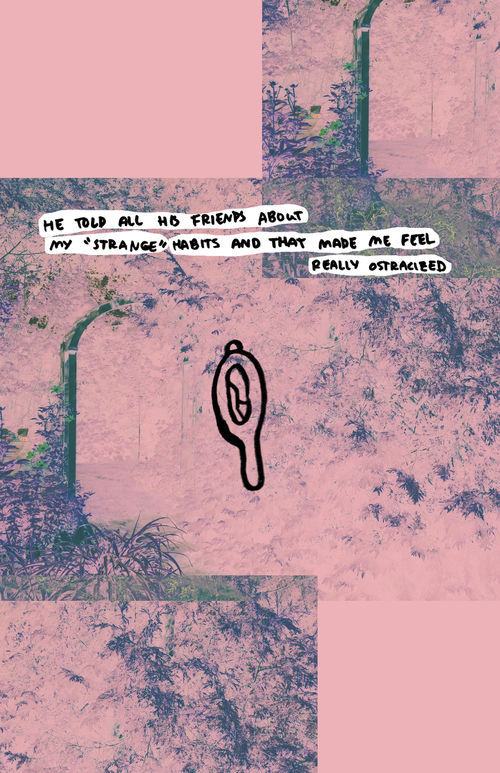
Excerpt from Lina Wu, For Girls Who Cry Often, 2016. Courtesy of the artist.
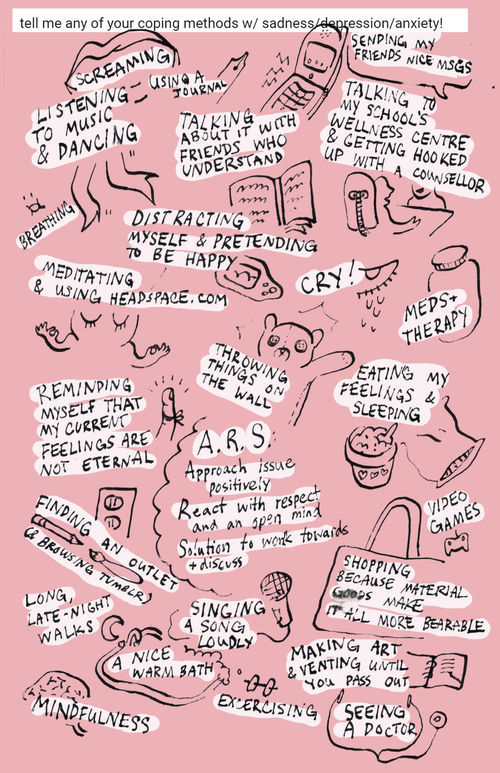
Excerpt from Lina Wu, For Girls Who Cry Often, 2016. Courtesy of the artist.
Lina Wu, a Toronto-based artist and illustrator, collected stories and testimonies from over 20 contributors to create the 40-page zine For Girls Who Cry Often. “It’s a nice feeling to be a part of something bigger,” she said of the collaborative creation process.
For the zine, Wu focused on exploring mental health through a femme lens and let her own experiences inform her process. “For much of my life, I noticed that ‘getting emotional’ was seen as a girly or feminine thing—meaning it is often dismissed as dramatic and frivolous,” she explained.
Wu created a dreamy pink atmosphere to backdrop the contributors’ candid and sometimes dark confessions. The zine’s adolescent tone is a nod to the fanzines of the 1990s that gave teenage girls a voice. In fact, Wu points out that zines are accessible art objects because people can easily share and buy them (readers buying copies of For Girls Who Cry Often are encouraged to pay what they can afford).
An interdisciplinary artist, Wu experiments with poetry, illustrations, comics, photography, and design in her zines. And while she doesn’t bring For Girls Who Cry Often to zine fairs anymore, she noted that making it has helped her grow as an artist.
Fuck This Life (2005–present)
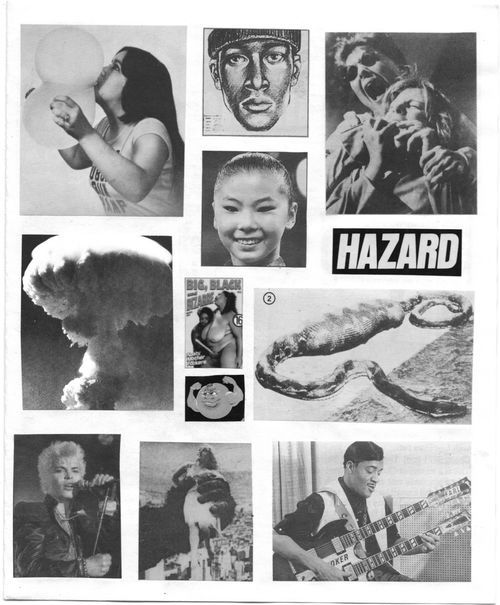
Excerpt from Dave Sander, Fuck This Life, 2018. Courtesy of 8ball Community.
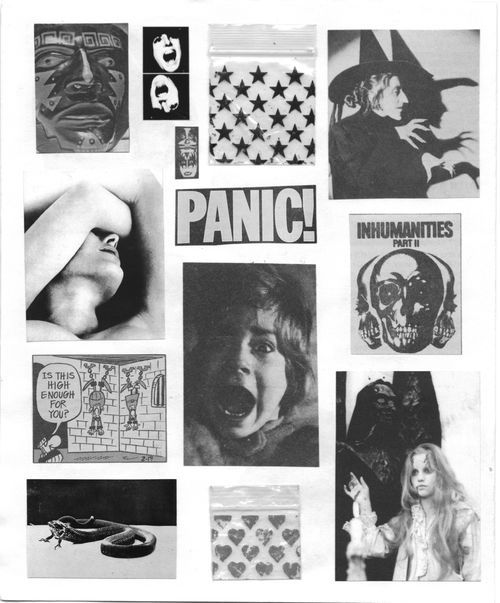
Excerpt from Dave Sander, Fuck This Life, 2018. Courtesy of 8ball Community.
Today, Dave Sander (a.k.a. “Weirdo Dave”) is a visual artist known for collaborations with Vans and Supreme. But back in 2005, Sander was cramming newspaper and magazine clippings into his desk drawer almost out of habit. “After I got a lot,” Sander said, “I thought it would be time to make a zine.”
Flipping through the pages of any issue of Fuck This Life is like witnessing the end-of-life montage people describe after a near-death experience. For Sander, zine-making can be an aggressively cathartic process: “You get to kill shit in your own way,” he offered.
Fuck This Life is a stream-of-consciousness compilation of found imagery—like the mushroom cloud of an atomic bomb or porn stars mid-orgasm—the result of Sander channeling his pain to “create a beautiful, loud, brutal fantasyland.” He refers to the zine ashis deepest, darkest best friend. “It was my reason for living, so I guess it saved me,” he said.
Grief Poems (2017)
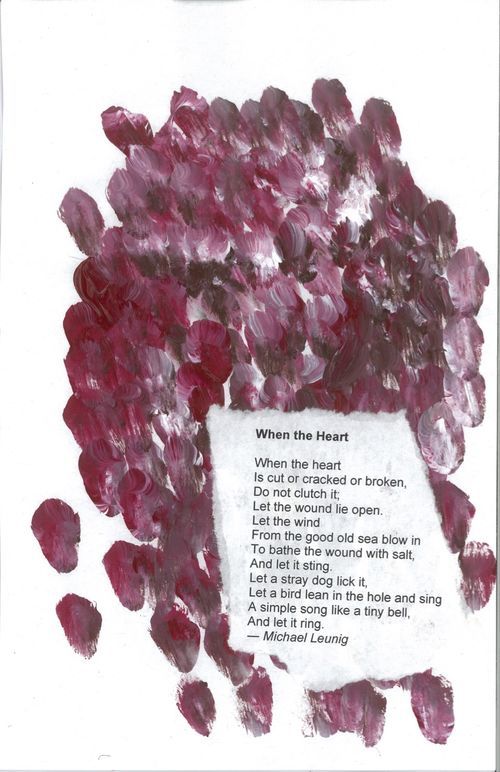
Excerpt from Chloe Zelkha, Grief Poems, 2017. Courtesy of the artist.
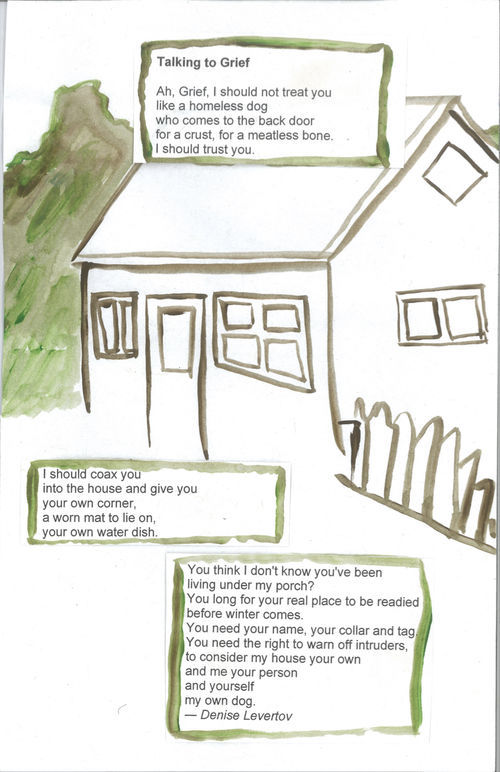
Excerpt from Chloe Zelkha, Grief Poems, 2017. Courtesy of the artist.
Chloe Zelkha describes her father’s death as a “sudden, heartbreaking shock.” Within months, she’d printed out a collection of poems she found in books or discovered through teachers and grieving groups, then spread them out on her kitchen table. There, the Berkeley-based Zelkha began painting onto the pages, cranking out one after another in succession, without drafting or revising. As she found more poems, she created more pages. The result was Grief Poems, a 26-page exercise in letting go.
Zelkha’s introduction to zines was Project NIA’s The Prison Industrial Complex Is… (2010–11), a straightforward explainer zine with minimal text and simple black-and-white illustrations. She sees zines are an inherently raw medium. “That permission that’s kind of baked into the form,” she said, “is liberating.”
Poems by everyone from Kobayashi Issa to W.S. Merwin are coated in Zelkha’s uninhibited brushstrokes. She compared her process with child’s play or dreaming: “If you watch a kid play on their own for long enough, you’ll see lots of fears, feelings, ideas eeking their way into their game, and then transforming in real time. Or when we dream, and different people, places, concerns visit us in weird ways.”
Identity Crisis (2017)
Librarian–slash–zine-maker Poliana Irizarry is probably better known for their autobiographical black-and-white zines, like My Left Foot (2016) and Training Wheels (2013). But with Identity Crisis, the San Jose–based artist seemed the most vulnerable they’ve ever been. “My abuela suffered many miscarriages at the hands of American doctors, and her surviving offspring also struggle with reproductive issues,” Irizarry wrote. “Many Puerto Ricans do.”
Before the birth control pill was approved by the FDA in 1960, nearly 1,500 Puerto Rican women were unknowingly part of one of the earliest human trials for the pill. Between the 1930s and ’70s, nearly one-third of Puerto Rico’s female population of childbearing age had undergone “the operation,” often without being properly educated on its effects.
Irizarry made Identity Crisis,their first full-color art zine,during a South Bay DIY Zine Collective workshop. Personal and family histories intersect across fragmented pictures of succulents and Southwestern landscapes in a half-prose, half-verse journey through Irizarry’s identity. In just a few pages, Irizarry wrestles with intergenerational trauma and their own post-traumatic stress disorder (PTSD). Irizarry speaks directly to their oppressors, defiant and resolute: “I live in spite of you.”
Shit I Made When I Was Sad (a.k.a. sad zine)(2018)
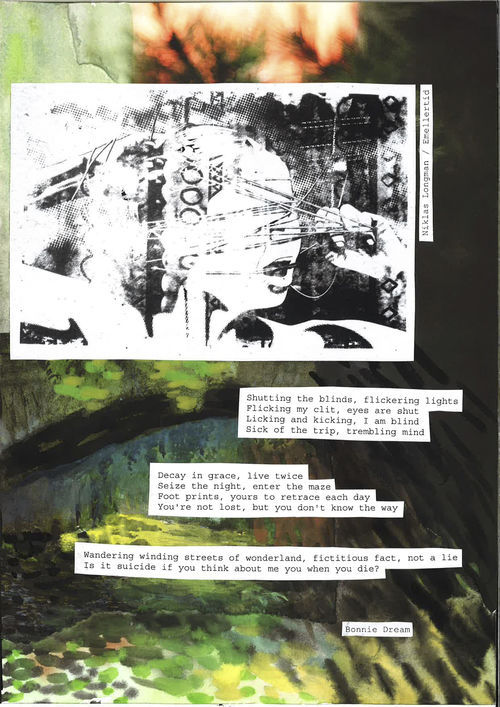
Excerpt from Shit I Made When I Was Sad a.k.a. sad zine, 2018. Courtesy of Malin Rantzer and Anna Persmark.
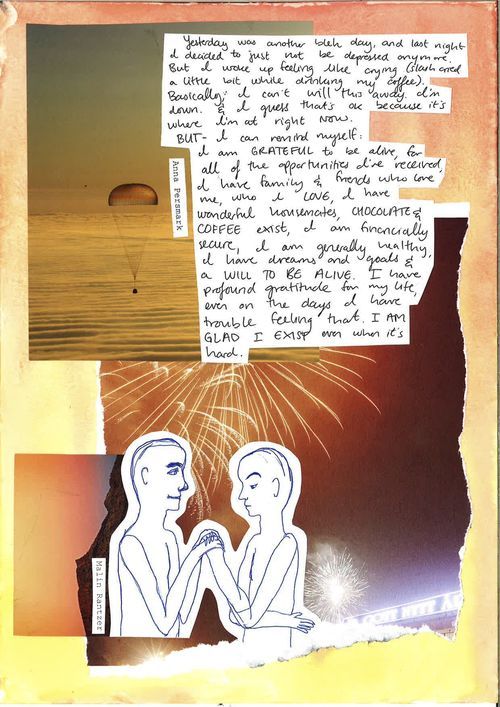
Excerpt from Shit I Made When I Was Sad a.k.a. sad zine, 2018. Courtesy of Malin Rantzer and Anna Persmark.
It started when Swedish friends Malin Rantzer and Anna Persmark were showing each other drawings and writing in journals they’d made while they were feeling low. “I noticed that some of the stuff we’d drawn resembled the other’s drawing,” Malin remembered, “and I think at that point we realized we should make a zine about being sad.” Rantzer turned to social media and put out a “swenglish/svengelska” (Swedish-English) call for submissions.
The then–Sweden-based duo (Persmark has since relocated to Portland, Oregon) made sad zine by cutting out and taping or pasting their artworks onto new pages, then scanning them and folding them into a booklet. Persmark sees zine-making as one of the most intimate ways of sharing her feelings; she goes out in person to share copies with her community.
“Even if all the submitters did not know each other,” Malin explained, “they were all friends’ friends or friends’ friends’ friends, and maybe that also can contribute to an atmosphere where it is safe to be vulnerable.” While making the individual works helped them heal, Persmack noted that the process of compiling the zine proved to be revelatory: “Sadness is both intensely personal and universal,” she said.
Sula Collective Issue 3: Mental Health (2015)

Oyinda Yemi-Omowum, An Emotional Response to Colours, 2015. Excerpt from Sula Collective Issue 3: Mental Health, 2015. Courtesy of Sula Collective.
Sula Collective calls itself an online “[maga]zine for and by people of colour.” Initially an exclusively online zine—different from a blog in name and ethos—it reflected its Gen-Y creators and their new ideas of what a zine could be. It’s one of the more visible new zines, among many, with the purpose of turning an online network into an IRL community. Ever since they founded it in 2015, co-creators Kassandra Piñero and Sophia Yuet See knew they wanted to dedicate an issue to mental health.
Sula Collective Issue 3: Mental Health sheds light on how teenagers of color navigate their parents’ more conservative understanding of mental health issues. “We wanted to discuss the things we kept hidden from our parents or couldn’t talk about with friends,” Piñero and Yuet See explained.
The issue was published in November 2015 and serves as a record of how today’s young artists are taking intersectional approaches to dealing with mental health issues. For example, Oyinda, a then–16-year-old Nigerian girl living in London, submitted a color-coded collage of self-portraits and textures called An Emotional Response to Colours. The literary submissions are paired with original artworks, sourced from Sula Collective’ssubmissions inbox, which range from digital art to watercolors. When asked about what makes zines a unique medium, Piñero and Yuet See answered, simply, “control.”
Shrinks: A Retrospective (2018)
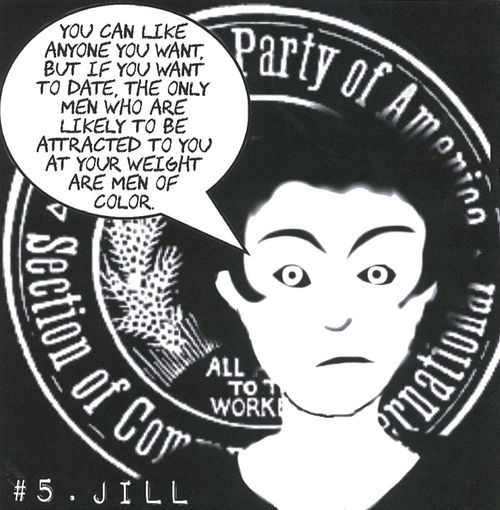
Excerpt from Karla Keffer, Shrinks: A Retrospective, 2018. Courtesy of the artist.
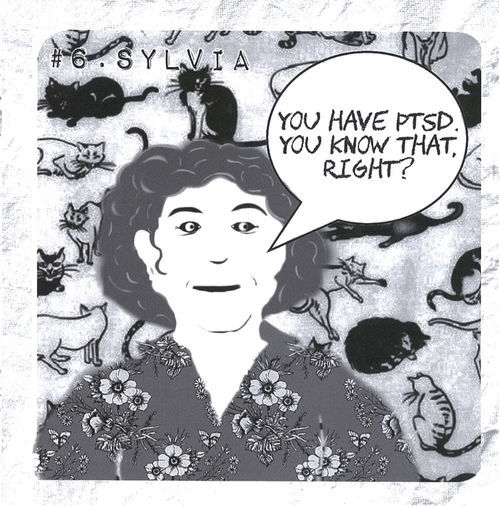
Excerpt from Karla Keffer, Shrinks: A Retrospective, 2018. Courtesy of the artist.
Shrinks is part of Karla Keffer’s zine series “The Real Ramona,” where she discusses being diagnosed with and treated for PTSD after almost 30 years in therapy. The Mississippi-based artist found a sense of direction for her work, and Shrinks in particular, through learning about the Satanic Panic of the 1980s.
This phenomenon (which gave daytime television hosts the ratings of their dreams) involved psychologists across America fueling a nationwide hysteria by diagnosing patients with satanic ritual abuse (SRA) and sending them off to tough-love camps.
“Shrinks are human and fallible,” Keffer explained. “I had put a great deal of trust in their infallibility.” In Shrinks, Keffer created profiles of every therapist she’s ever had—like Julie the gaslighter and Jill the racist. Survivors of abuse are often—and paradoxically—burdened with the task of seeing through the abuse and saving themselves. “One of the things I found difficult was sorting out what had happened with each therapist—like, did she/he really say that outlandish thing?” Keffer recalled.
So much of zine-making is about reclaiming—reclaiming the freedom of expression, reclaiming space, reclaiming the past. And, as Keffer put it, “you’ve made your own book, which is not something you experience when you’re writing short stories and sending them to lit mags.” If any one thing can define zines as a medium, it’s the unbridled control it gives artists.
from Artsy News
4 notes
·
View notes
Text
I’m Dreaming of an Orange Christmas (Repost)
Originally published to Xanga on December 22, 2011
Hey there, Winnebagos. If you're here for the latest characterisation atrocity committed by Red Hood and the Outlaws, I'm afraid you're going to be a bit disappointed. While ripping into this comic will remain a regular feature here, like Suicide Squad, it's being delayed this week because I feel like it. I've got something slightly older but much better for you this week. And it's even seasonally appropriate. Today we're going to run a recap for the Green Lantern Larfleeze Christmas Special #1 from last year~ Here's the cover, as always:
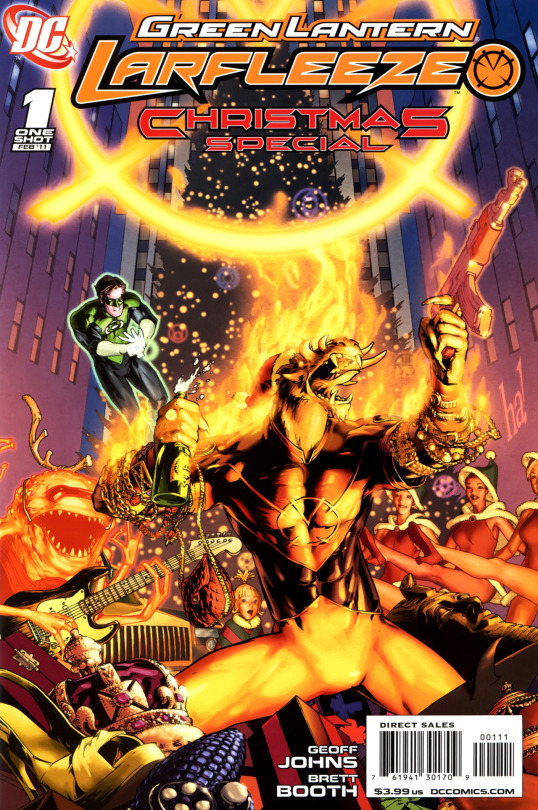
Now, before we begin, let's do a little summary of this character, just in case you don't know who Larfleeze is. And shame on you for not knowing.
Larfleeze was created in the gap of issues between two of the finest Green Lantern events in comics history, Sinestro Corps War and Blackest Night. Green Lanterns aren't the only lanterns, and Sinestro decided to make that absolutely true. Hence the Sinestro Corps War: Sinestro creates some yellow rings to offset the green and gathers together a bunch who can best use its fear powers. From there, more lantern colours kept popping up. Long-time rivals the Star Sapphires officially tapped the violet light of love, an old enemy stoked the red fires of rage, and the blue glow of hope was brought about to balance all the groups. And then came this one: the orange light of avarice, held in possession by the greediest, hungriest, most selfish being in the galaxy. His name is Larfleeze, AKA Agent Orange. You can read more of his origin in the collection Green Lantern: Agent Orange, which of course I highly recommend.
But why? Why do I recommend picking up every dang comic with Larfleeze in it that you can find? Well, because Larfleeze is frigging awesome, that's why. He's pretty much the greatest Green Lantern character since the book started in 1959. (Yes, I realise it actually started much earlier with Alan Scott's character, but since Larfleeze is part of the mythos that began with Hal Jordan, we're using Hal's debut as the starting point.) Larfleeze is quirky and weird and damn entertaining. He might be on the negative side of the emotional spectrum, but he's not explicitely evil. He's certainly no Joker or... Vandal Savage, let's say. He's largely hilarious, mostly since he acts like a greedy child most of the time. He's also unreasonably powerful (actual quote from Blackest Night: "Power levels 10,000%"), his ring commits literal identity theft of those slain by it, and he has some hidden depths. Which leads us into the comic we're about to look at now.
We open on Larfleeze's junkyard. Yep, Larfleeze has a junkyard and spends much time on Earth. This comes from an exchange he had with Lex Luthor (who briefly possessed a copy of Larfleeze's ring), who told Larfleeze that one of the most valuable things one can have on Earth is land. And frankly, he has a point. (He's Lex Luthor, he always does.) Larfleeze took this to heart, and obtained for himself a junkyard where he can store all his things and possessions and stuff. I don't think it's ever quite discussed how he obtained it, but my guess is "shenanigans". But I digress.
Also through shenanigans, Larfleeze has heard of the Earth's mighty and amazing guardian, the one they call Santa Claus. Sleeping restlessly in his bed, Larfleeze awakens to a large row of various clocks. Alas, not one cat clock among them, though. Realising the day he's awaited, Larfleeze goes tearassing out of bed, shouting delightedly. (Told you he's like a big child. A very destructive, competently-violent child with a rap sheet as long as your arm and more power than anyone could know what to do with.) Larfleeze gathers up his wishlist, which could put Calvin's to shame, and rushes down the stairs, anticipating what gifts Santa has left for him and how many hours it will take him to unwrap them all (by his estimate, 18. "Perhaps twenty if the ratwaffle cheese wheels are individually wrapped!"). But to his horror, there's nothing under the tree at all. The stockings hang empty.
Larfleeze at first thinks he's been robbed, but then he notices that the cookies and milk are untouched. And then comes one of the reasons why this is among the greatest comics of all time: a recipe. An actual recipe for making orange cookies just like the ones Larfleeze has prepared. When was the last time Batman ever included a recipe for making, I dunno, gingerbread batarangs? Never, that's when. Anyways, Larfleeze concludes that Santa has callously overlooked him in his deliveries, despite his adherence to the decorations and sweet-based offerings. Catching sight of a parade on TV, Larfleeze sees Santa coming down the street. He immediately vacates his house and attacks the parade with razor-fanged reindeer.
In the scuffle, Santa loses his beard, and Larfleeze discovers he is a decoy. He then catches sight of another Santa rushing into Dee Cee's Store of Stuff. He chases the Santa through the store, and discovers a whole group of men dressed in Santa costumes. Larfleeze snarls and threatens their lives until a brave little boy speaks up and tells Larfleeze where Santa is: the North Pole. We then get another brilliant page, this time of a maze made out of the Orange Lantern symbol. For extra awesome, Larfleeze is dressed as Indiana Jones on this page, and also stumbles across Superman's Fortress of Solitude before shrugging and leaving. Oh Larfleeze, if you only knew the rare treasures that lay within it, you would surely salivate at the chance to merely even see them.
After hours of searching, Larfleeze has enough and just begins blasting at the snow and ice. Green Lantern (Hal Jordan, if you were wondering) shows up, and says the ice caps have enough problems with melting without Larfleeze contributing. That's right, Hal Jordan wants you all to go green! Larfleeze, again in petulant child mode, begins demanding that Hal bring out Santa from wherever he's hiding him. Hal insists Santa is just a story told for fun, which Larfleeze can stand even less. Hal then plays his trump card. Christmas, he says, isn't about presents or Santa or getting. It's about having Christmas spirit. Larfleeze, of course, latches on to the word "having", and asks, "How does one... attain this Christmas spirit?" And to help you out, the comic generously includes yet another crafty sort of activity: a Larfleeze Christmas tree ornament to cut out and glue. This thing is pretty boss, and the only reason I haven't done it is because it would ruin the comic.
Hal takes Larfleeze back to his junkyard, and begins searching through it, despite Larfleeze's protests. Hal sorts through Larfleeze's stuff, and gives a little lecture about how Christmas spirit isn't about making the pile of stuff in your backyard bigger (c'mon guys, we all have one). It's about the usual Christmas special mention of giving. Hal then proceeds to give Larfleeze's stuff away to various charities and donation places, all while talking about the spirit of generosity. Larfleeze looks around at his empty junkyard, with only a broken toilet and an empty septic tank left in it, and comments, "I don't think I like Christmas spirit very much." And that, my friends, is why Larfleeze is a delight to read.
Hal continues to try and explain to Larfleeze that Santa isn't real and he shouldn't put so much importance on having stuff, while Larfleeze continues to be Larfleeze. Finally Hal gives up, and drops Larfleeze's Christmas list in disgust before flying off. He turns to give Larfleeze one last piece of advice: "Do yourself a favour, Larfleeze. Look at that list. Look at it close. And ask yourself--Do I really need it?" Larfleeze appears stunned by this. The last page is silent. Larfleeze pores over his list inside his little cabin. Eventually he comes to the very last item at the bottom of the list: "My Family". Larfleeze stares at it, and then curls himself around a pillow and lies down. The end.
Boy, what did I say about hidden depths, huh? Now you see why I read everything that Larfleeze appears in. (Next thing he appears in: Green Lantern New Guardians #4, coming December 28th. Can't wait~ ) Also, the issue then includes a bonus 2-page comic about Orange Lantern member Glomulus, and his quest to find a gift for Larfleeze, and all done in the Tiny Titans style, so it's quite cute. And a full page holiday message picture of all the Earth Green Lanterns (save Kyle) wishing you a happy holidays from DC closes out the issue.
This is a pretty great comic, and I highly recommend picking it up should you stumble across it in the back issues of your local comic shop or some online dealer. DC used to put out Christmas and Halloween specials all the time, but they didn't this year, probably due to the accursed relaunch. Perhaps next year they'll get back on the ball.
Also, it just occurred to me that Larfleeze would be absolutely the greatest Grinch of all time.
3 notes
·
View notes
Text
Dead Fandoms, Part 3
Read Part One of Dead Fandoms here.
Read Part Two of Dead Fandoms here.
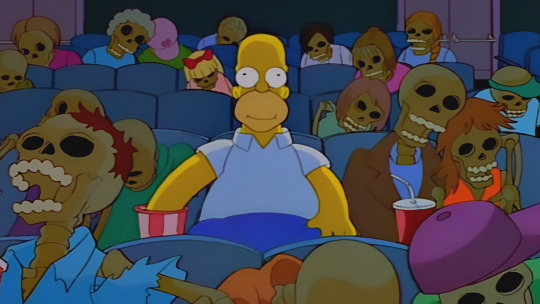
Before we continue, I want to add the usual caveat that I actually don’t want to be right about these fandoms being dead. I like enthusiasm and energy and it’s a shame to see it vanish.
Mists of Avalon
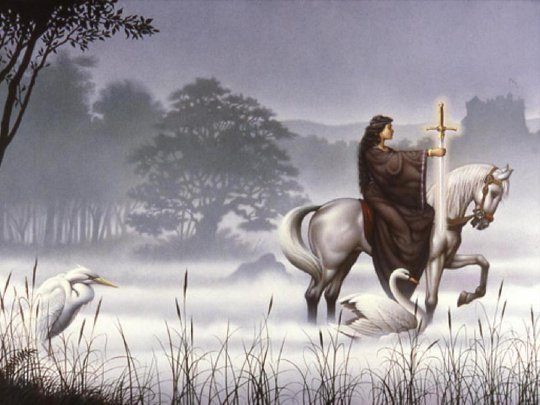
Remember that period of time of about 15 years, where absolutely everybody read this book and was obsessed with it? It could not have been bigger, and the fandom was Anne Rice huge, overlapping for several years with USENET and the early World Wide Web…but it’s since petered out.
Mists of Avalon’s popularity may be due to the most excellent case of hitting a demographic sweet spot ever. The book was a feminist retelling of the Arthurian Mythos where Morgan Le Fay is the main character, a pagan from matriarchal goddess religions who is fighting against encroaching Christianity and patriarchal forms of society coming in with it. Also, it made Lancelot bisexual and his conflict is how torn he is about his attraction to both Arthur and Guinevere.
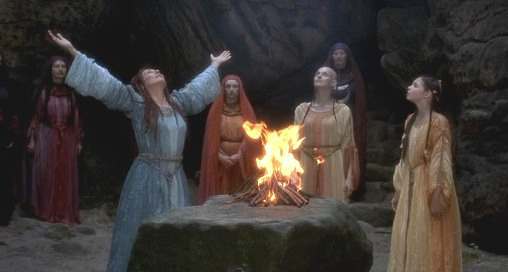
Remember, this novel came out in 1983 – talk about being ahead of your time! If it came out today, the reaction from a certain corner would be something like “it is with a heavy heart that I inform you that tumblr is at it again.”
Man, demographically speaking, that’s called “nailing it.” It used to be one of the favorite books of the kind of person who’s bookshelf is dominated by fantasy novels about outspoken, fiery-tongued redheaded women, who dream of someday moving to Scotland, who love Enya music and Kate Bush, who sell homemade needlepoint stuff on etsy, who consider their religious beliefs neo-pagan or wicca, and who have like 15 cats, three of which are named Isis, Hypatia, and Morrigan.
This type of person is still with us, so why did this novel fade in popularity? There’s actually a single hideous reason: after her death around 2001, facts came out that Marion Zimmer Bradley abused her daughters sexually. Even when she was alive, she was known for defending and enabling a known child abuser, her husband, Walter Breen. To say people see your work differently after something like this is an understatement – especially if your identity is built around being a progressive and feminist author.
Robotech
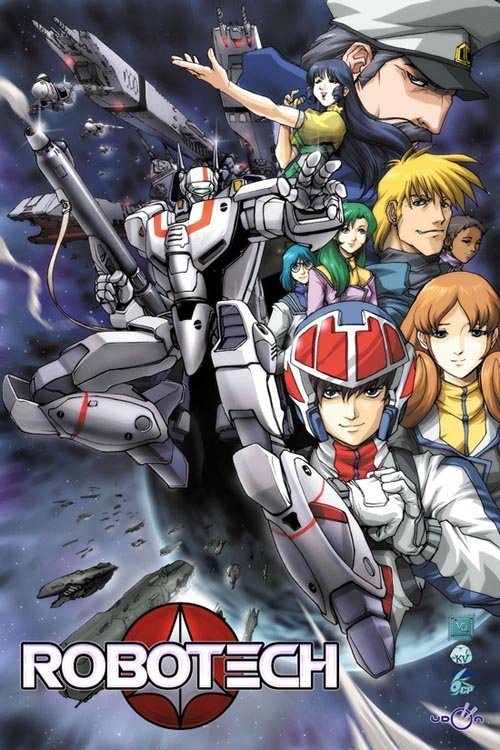
I try to break up my sections on dead fandoms into three parts: first, I explain the property, then explain why it found a devoted audience, and finally, I explain why that fan devotion and community went away. Well, in the case of Robotech, I can do all three with a single sentence: it was the first boy pilot/giant robot Japanimation series that shot for an older, teenage audience to be widely released in the West. Robotech found an audience when it was the only true anime to be widely available, and lost it when became just another import anime show. In the days of Crunchyroll, it’s really hard to explain what made Robotech so special, because it means describing a different world.

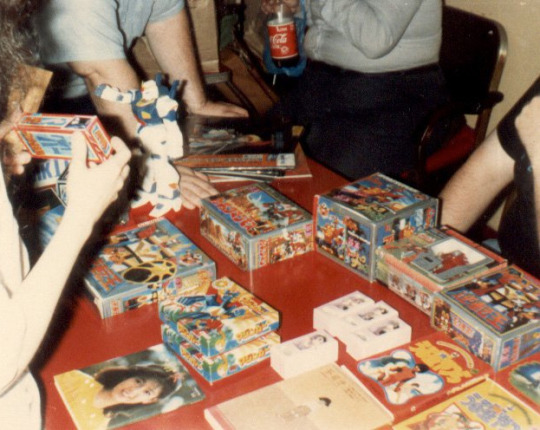
Try to imagine what it was like in 1986 for Japanime fans: there were barely any video imports, and if you wanted a series, you usually had to trade tapes at your local basement club (they were so precious they couldn’t even be sold, only traded). If you were lucky, you were given a script to translate what you were watching. Robotech though, was on every day, usually after school. You want an action figure? Well, you could buy a Robotech Valkyrie or a Minmei figure at your local corner FAO Schwartz.

However, the very strategy that led to it getting syndicated is the very reason it was later vilified by the purists who emerged when anime became a widespread cultural force: strictly speaking, there actually is no show called “Robotech.” Since Japanese shows tend to be short run, say, 50-60 episodes, it fell well under the 80-100 episode mark needed for syndication in the US. The producer of Harmony Gold, Carl Macek, had a solution: he’d cut three unrelated but similar looking series together into one, called “Robotech.” The shows looked very similar, had similar love triangles, used similar tropes, and even had little references to each other, so the fit was natural. It led to Robotech becoming a weekday afternoon staple with a strong fandom who called themselves “Protoculture Addicts.” There were conventions entirely devoted to Robotech. The supposed shower scene where Minmei was bare-breasted was the barely whispered stuff of pervert legend in pre-internet days. And the tie in novels, written with the entirely western/Harmony Gold conception of the series and which continued the story, were actually surprisingly readable.

The final nail in the coffin of Robotech fandom was the rise of Sailor Moon, Toonami, Dragonball, and yes, Pokemon (like MC Hammer’s role in popularizing hip hop, Pokemon is often written out of its role in creating an audience for the next wave of cartoon imports out of insecurity). Anime popularity in the West can be defined as not a continuing unbroken chain like scifi book fandom is, but as an unrelated series of waves, like multiple ancient ruins buried on top of each other (Robotech was the vanguard of the third wave, as Anime historians reckon); Robotech’s wave was subsumed by the next, which had different priorities and different “core texts.” Pikachu did what the Zentraedi and Invid couldn’t do: they destroyed the SDF-1.
Legion of Super-Heroes
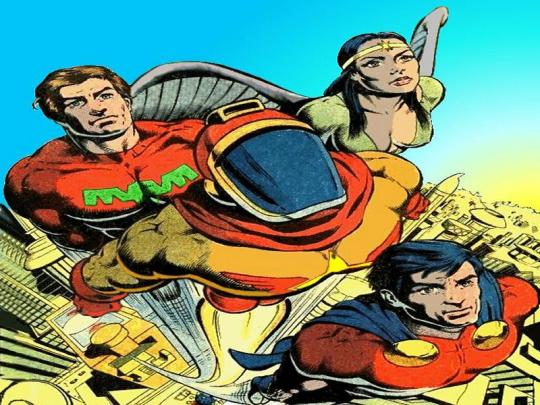
Legion of Superheroes was comic set in the distant future that combined superheroes with space opera, with a visual aesthetic that can best be described as “Star Trek: the Motion Picture, if it was set in a disco.”

I’ve heard wrestling described as “a soap opera for men.” If that’s the case, then Legion of Super-Heroes was a soap opera for nerds. The book is about attractive 20-somethings who seem to hook up all the time. As a result, it had a large female fanbase, which, I cannot stress enough, is incredibly unusual for this era in comics history. And if you have female fans, you get a lot of shipping and slashfic, and lots of speculation over which of the boy characters in the series is gay. The fanon answer is Element Lad, because he wore magenta-pink and never had a girlfriend. (Can’t argue with bulletproof logic like that.) In other words, it was a 1970s-80s fandom that felt much more “modern” than the more right-brained, bloodless, often anal scifi fandoms that existed around the same time, where letters pages were just nitpicking science errors by model train and elevator enthusiasts.
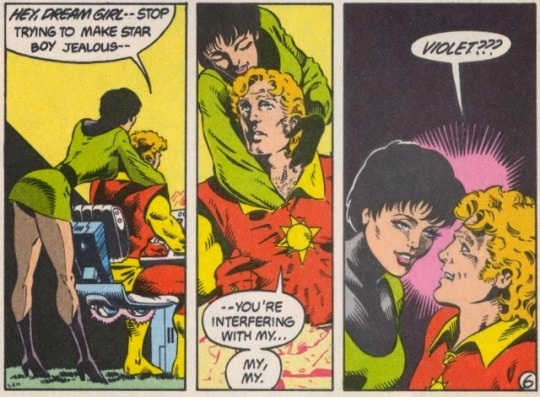
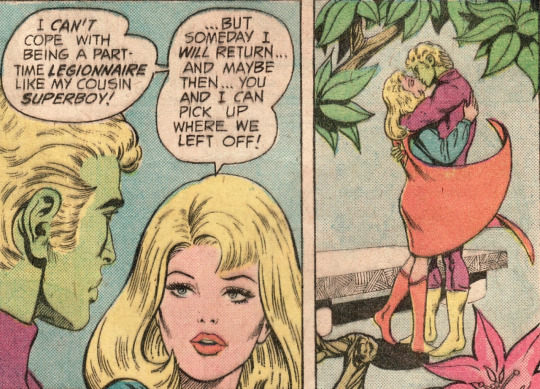
Legion Headquarters seemed to be a rabbit fuck den built around a supercomputer and Danger Room. Cosmic Boy dressed like Tim Curry in Rocky Horror. There’s one member, Duo Damsel, who can turn into two people, a power that, in the words of Legion writer Jim Shooter, was “useful for weird sex...and not much else.”
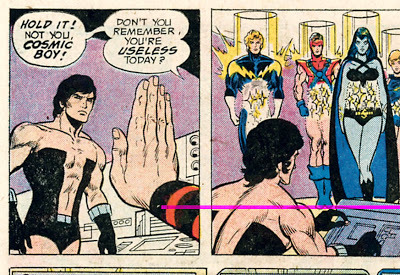
LSH was popular because the fans were insanely horny. This is, beyond the shadow of a doubt, the thirstiest fandom of all time. You might think I’m overselling this, but I really think that’s an under-analyzed part of how some kinds of fiction build a devoted fanbase.
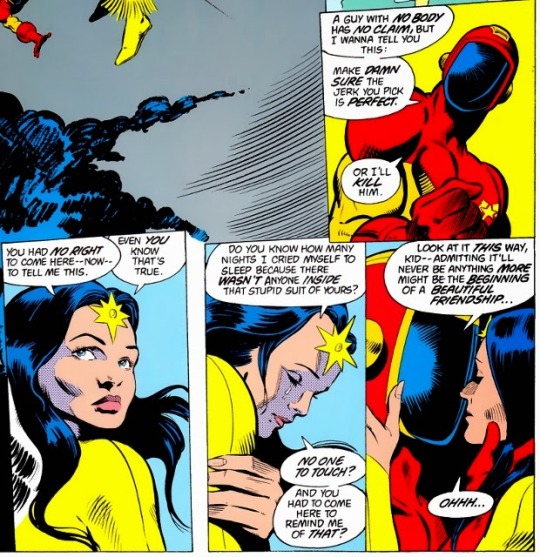
For example, a big reason for the success of Mass Effect is that everyone has a favorite girl or boy, and you have the option to romance them. Likewise, everyone who was a fan of Legion remembers having a crush. Sardonic Ultra Boy for some reason was a favorite among gay male nerds (aka the Robert Conrad Effect). Tall, blonde, amazonian telepath Saturn Girl, maybe the first female team leader in comics history, is for the guys with backbone who prefer Veronica over Betty. Shrinking Violet was a cute Audrey Hepburn type. And don’t forget Shadow Lass, who was a blue skinned alien babe with pointed ears and is heavily implied to have an accent (she was Aayla Secura before Aayla Secura was Aayla Secura). Light Lass was commonly believed to be “coded lesbian” because of a short haircut and her relationships with men didn’t work out. The point is, it’s one thing to read about the adventures of a superteam, and it implies a totally different level of mental and emotional involvement to read the adventures of your imaginary girlfriend/boyfriend.
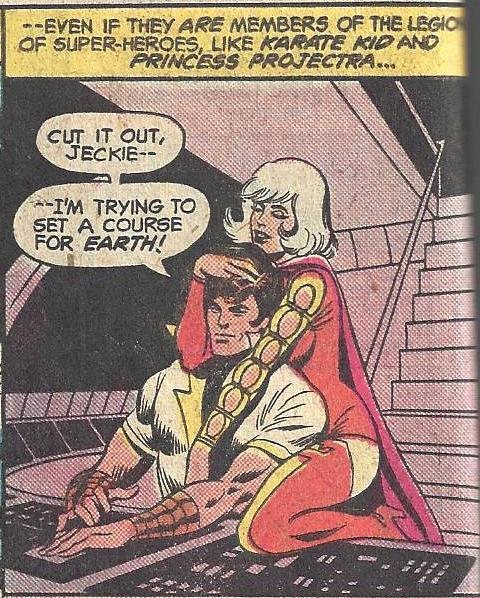
Now, I should point out that of all the fandoms I’ve examined here, LSH was maybe the smallest. Legion was never a top seller, but it was a favorite of the most devoted of fans who kept it alive all through the seventies and eighties with an energy and intensity disproportionate to their actual numbers. My gosh, were LSH fans devoted! Interlac and Legion Outpost were two Legion fanzines that are some of the most famous fanzines in comics history.
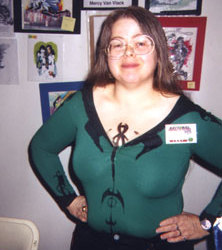
If nerd culture fandoms were drugs, Star Wars would be alcohol, Doctor Who would be weed, but Legion of Super-Heroes would be injecting heroin directly into your eyeballs. Maybe it is because the Legionnaires were nerdy, too: they played Dungeons and Dragons in their off time (an escape, no doubt, from their humdrum, mundane lives as galaxy-rescuing superheroes). There were sometimes call outs to Monty Python. Basically, the whole thing had a feel like the dorkily earnest skits or filk-singing at a con. Legion felt like it’s own fan series, guest starring Patton Oswalt and Felicia Day.
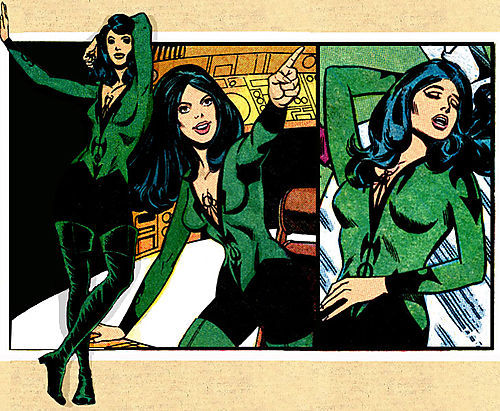
It helped that the boundary between fandom and professional was incredibly porous. For instance, pro-artist Dave Cockrum did covers for Legion fanzines. Former Legion APA members Todd and Mary Biernbaum got a chance to actually write Legion, where, with the gusto of former slashfic writers given the keys to canon, their major contribution was a subplot that explicitly made Element Lad gay. Mike Grell, a professional artist who got paid to work on the series, did vaguely porno-ish fan art. Again, it’s hard to tell where the pros started and the fandom ended; the inmates were running the asylum.
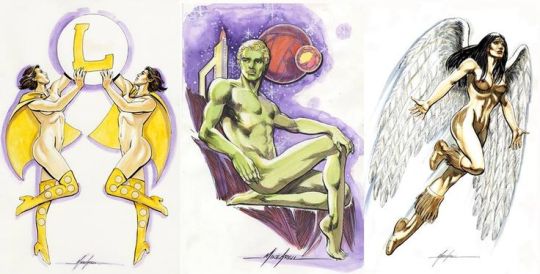
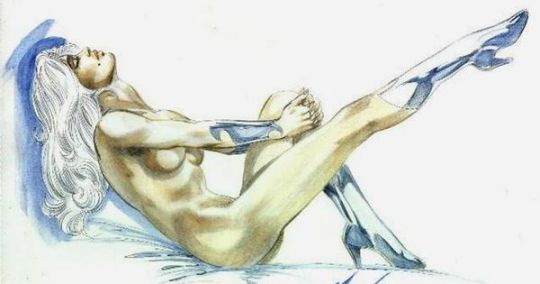
Mostly, Legion earned this devotion because it could reward it in a way no other comic could. Because Legion was not a wide market comic but was bought by a core audience, after a point, there were no self-contained one-and-done Legion stories. In fact, there weren’t even really arcs as we know it, which is why Legion always has problems getting reprinted in trade form. Legion was plotted like a daytime soap opera: there were always five different stories going on in every issue, and a comic involved cutting between them. Sure, like daytime soap operas, there’s never a beginning, just endless middles, so it was totally impossible for a newbie to jump on board...but soap operas know what they are doing: long term storytelling rewards a long term reader.
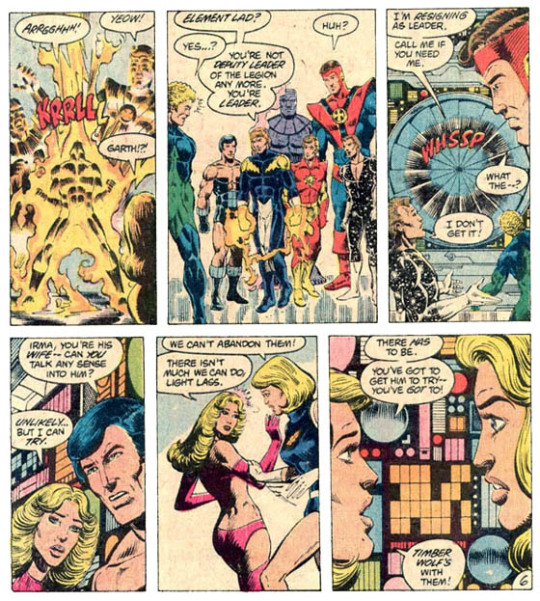
This brings me to today, where Legion is no longer being published by DC. There is no discussion about a movie or TV revival. This is amazing. Comics are a world where the tiniest nerd groups get pandered to: Micronauts, Weirdworld, Seeker 3000, and Rom have had revival series, for pete’s sake. It’s incredible there’s no discussion of a film or TV treatment, either; friggin Cyborg from New Teen Titans is getting a solo movie.
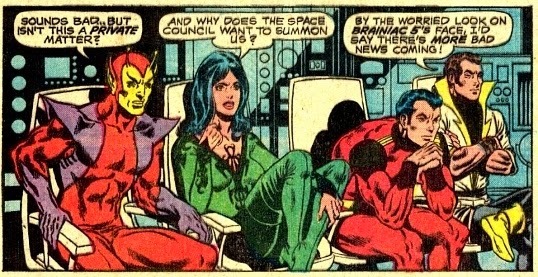
Why did Legion stop being such a big deal? Where did the fandom that supported it dissolve to? One word: X-Men. Legion was incredibly ahead of its time. In the 60s and 70s, there were barely any “fan” comics, since superhero comics were like animation is today: mostly aimed at kids, with a minority of discerning adult/teen fans, and it was success among kids, not fans, that led to something being a top seller (hence, “fan favorites” in the 1970s, as surprising as it is to us today, often did not get a lot of work, like Don MacGregor or Barry Smith). But as newsstands started to push comics out, the fan audience started to get bigger and more important…everyone else started to catch up to the things that made Legion unique: most comics started to have attractive people who paired up into couples and/or love triangles, and featured extremely byzantine long term storytelling. If Legion of Super-Heroes is going to be remembered for anything, it’s for being the smaller scale “John the Baptist” to the phenomenon of X-Men, the ultimate “fan” comic.
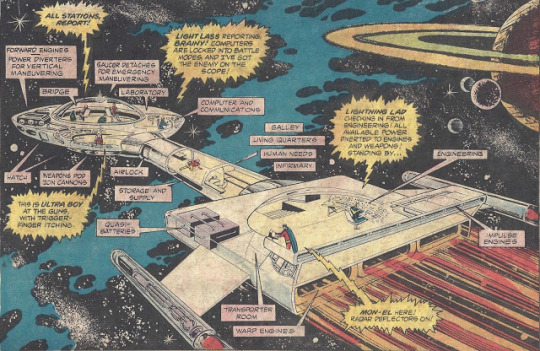
The other thing that killed Legion, apart from Marvel’s Merry Mutants, that is, was the r-word: reboots. A reboot only works for some properties, but not others. You reboot something when you want to find something for a mass audience to respond to, like with Zorro, Batman, or Godzilla.
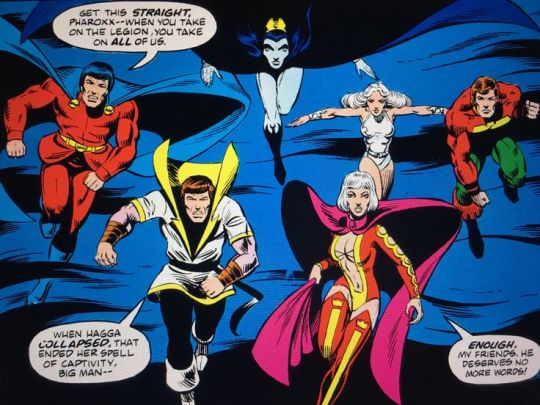
Legion, though, was not a comic for everybody, it was a fanboy/girl comic beloved by a niche who read it for continuing stories and minutiae (and to jack off, and in some cases, jill off). Rebooting a comic like that is a bad idea. You do not reboot something where the main way you engage with the property, the greatest strength, is the accumulated lore and history. Rebooting a property like that means losing the reason people like it, and unless it’s something with a wide audience, you only lose fans and won’t get anything in return for it. So for something like Legion (small fandom obsessed with long form plots and details, but unlike Trek, no name recognition) a reboot is the ultimate Achilles heel that shatters everything, a self-destruct button they kept hitting over and over and over until there was nothing at all left.
E. E. Smith’s Lensman Novels
The Lensman series is like Gil Evans’s jazz: it’s your grandparents’ favorite thing that you’ve never heard of.
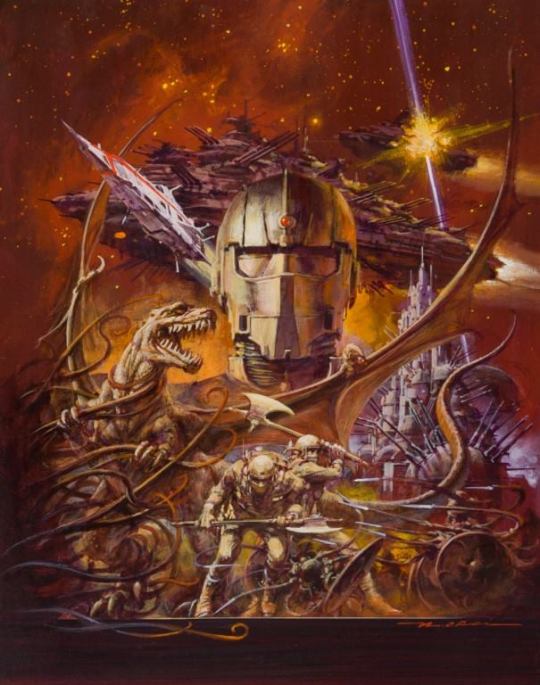
I mean, have you ever wondered exactly what scifi fandom talked about before the rise of the major core texts and cultural objects (Star Trek, Asimov, etc)? Well, it was this. Lensmen was the subject of fanfiction mailed in manilla envelopes during the 30s, 40s, and 50s (some of which are still around). If you’re from Boston, you might recognize that the two biggest and oldest scifi cons there going back to the 1940s, Boskone (Boscon, get it?) and Arisia, are references to the Lensman series. This series not only created space opera as we know it, but contributed two of the biggest visuals in scifi, the interstellar police drawn from different alien species, and space marines in power armor.

My favorite sign of how big this series was and how fans responded to it, was a great wedding held at Worldcon that duplicated Kimball Kinnison and Clarissa’s wedding on Klovia. This is adorable:
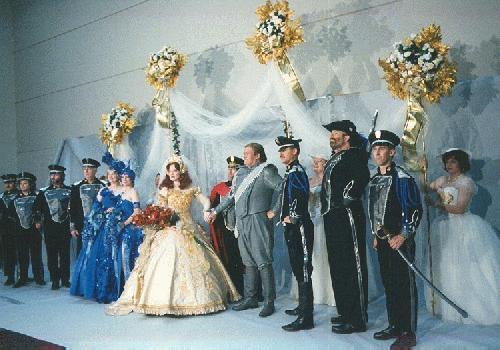
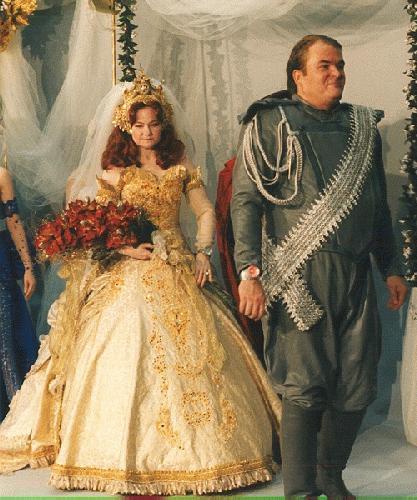
The basic story is pure good vs. evil: galactic civilization faces a crime and piracy wave of unprecedented proportions from technologically advanced pirates (the memory of Prohibition, where criminals had superior firearms and faster cars than the cops, was strong by the mid-1930s). A young officer, Kimball Kinnison (who speaks in a Stan Lee esque style of dialogue known as “mid-century American wiseass”), graduates the academy and is granted a Lens, an object from an ancient mystery civilization, who’s true purpose is unknown.
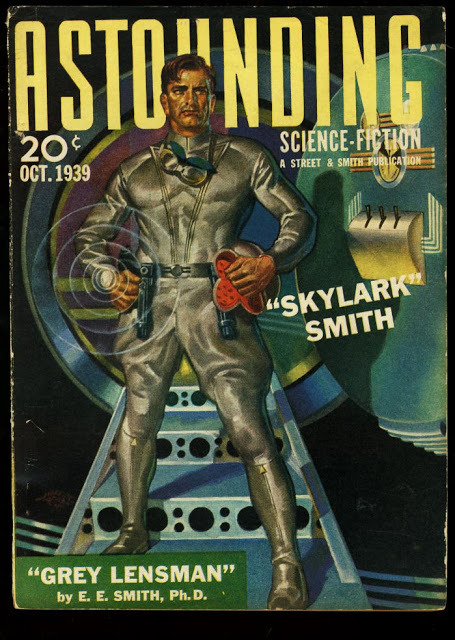
Lensman Kinnison discovers that the “crime wave” is actually a hostile invasion and assault by a totally alien culture that is based on hierarchy, intolerant of failure, and at the highest level, is ruled by horrifying nightmare things that breathe freezing poison gases. Along the way, he picks up allies, like van Buskirk, a variant human space marine from a heavy gravity planet who can do a standing jump of 20 feet in full space armor, Worsel, a telepathic dragon warrior scientist with the technical improvisation skills of MacGyver (who reads like the most sadistically minmaxed munchkinized RPG character of all time), and Nandreck, a psychologist from a Pluto-like planet of selfish cowards.
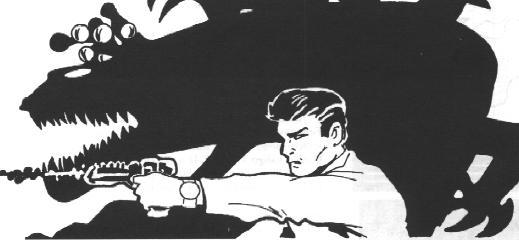
The scale of the conflict starts small, just skirmishes with pirates, but explodes to near apocalyptic dimensions. This series has space battles with millions of starships emerging from hyperspacial tubes to attack the ultragood Arisians, homeworld of the first intelligent race in the cosmos. By the end of the fourth book, there are mind battles where the reflected and parried mental beams leave hundreds of innocent bystanders dead. In the meantime we get evil Black Lensmen, the Hell Hole in Space, and superweapons like the Negasphere and the Sunbeam, where an entire solar system was turned into a vacuum tube.
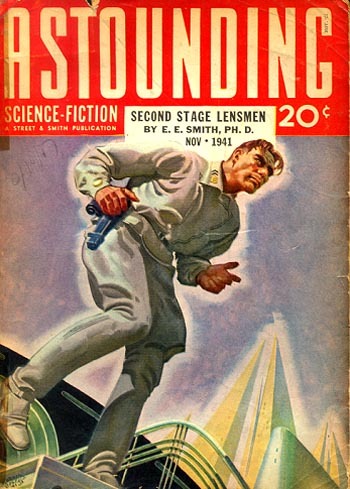
It’s not hard to understand why Lensmen faded in importance. While the alien Lensmen had lively psychologies, Lensman Kimball Kinnison was not an interesting person, and that’s a problem when scifi starts to become more about characterization. The Lensman books, with their love of police and their sexism (it is an explicit plot point that the Lens is incompatible with female minds – in canon there are no female Lensmen) led to it being judged harshly by the New Wave writers of the 1960s, who viewed it all as borderline fascist military-scifi establishment hokum, and the reputation of the series never recovered from the spirit of that decade.
Prisoner of Zenda

Prisoner of Zenda is a novel about a roguish con-man who visits a postage-stamp, charmingly picturesque Central European kingdom with storybook castles, where he finds he looks just like the local king and is forced to pose as him in palace intrigues. It’s a swashbuckling story about mistaken identity, swordfighting, and intrigue, one part swashbuckler and one part dark political thriller.
The popularity of this book predates organized fandom as we know it, so I wonder if “fandom” is even the right word to use. All the same, it inspired fanatical dedication from readers. There was such a popular hunger for it that an entire library could be filled with nothing but rip-offs of Prisoner of Zenda. If you have a favorite writer who was active between 1900-1950, I guarantee he probably wrote at least one Prisoner of Zenda rip-off (which is nearly always the least-read book in his oeuvre). The only novel in the 20th Century that inspired more imitators was Sherlock Holmes. Robert Heinlein and Edmond “Planet Smasher” Hamilton wrote scifi updates of Prisoner of Zenda. Doctor Who lifted the plot wholesale for the Tom Baker era episode, “Androids of Tara,” Futurama did this exact plot too, and even Marvel Comics has its own copy of Ruritania, Doctor Doom’s Kingdom of Latveria. Even as late as the 1980s, every kids’ cartoon did a “Prisoner of Zenda” episode, one of the stock plots alongside “everyone gets hit by a shrink ray” and the Christmas Carol episode.
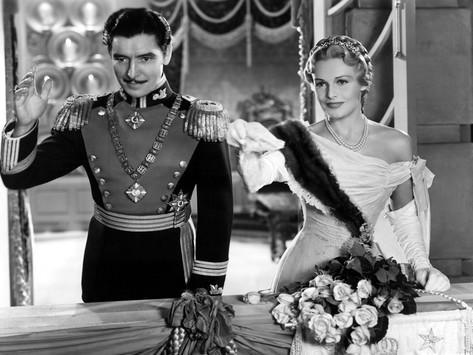
Prisoner of Zenda imitators were so numerous, that they even have their own Library of Congress sub-heading, of “Ruritanian Romance.”
One major reason that Prisoner of Zenda fandom died off is that, between World War I and World War II, there was a brutal lack of sympathy for anything that seemed slightly German, and it seems the incredibly Central European Prisoner of Zenda was a casualty of this. Far and away, the largest immigrant group in the United States through the entire 19th Century were Germans, who were more numerous than Irish or Italians. There were entire cities in the Midwest that were two-thirds German-born or German-descent, who met in Biergartens and German community centers that now no longer exist.
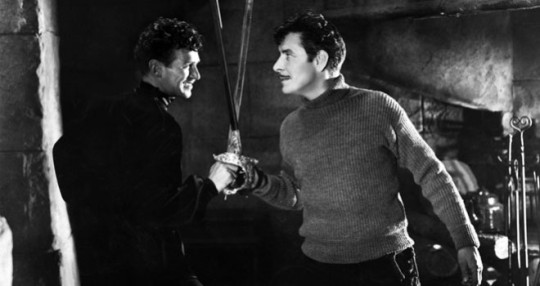
Kurt Vonnegut wrote a lot about how the German-American world he grew up in vanished because of the prejudice of the World Wars, and that disappearance was so extensive that it was retroactive, like someone did a DC comic-style continuity reboot where it all never happened: Germans, despite being the largest immigrant group in US history, are left out of the immigrant story. The “Little Bohemias” and “Little Berlins” that were once everywhere no longer exist. There is no holiday dedicated to people of German ancestry in the US, the way the Irish have St. Patrick’s Day or Italians have Columbus Day (there is Von Steuben’s Day, dedicated to a general who fought with George Washington, but it’s a strictly Midwest thing most people outside the region have never heard of, like Sweetest Day). If you’re reading this and you’re an academic, and you’re not sure what to do your dissertation on, try writing about the German-American immigrant world of the 19th and 20th Centuries, because it’s a criminally under-researched topic.
A. Merritt
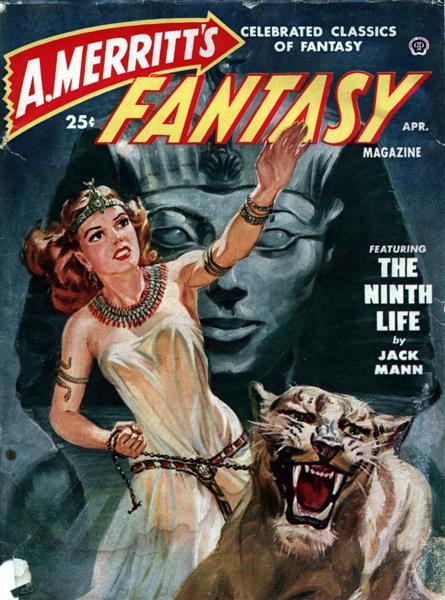
Pop quiz: who was the most popular and influential fantasy author during the 1930s and 40s?
If you answered Tolkien or Robert E. Howard, you’re wrong - it was actually Abraham Merritt. He was the most popular writer of his age of the kind of fiction he did, and he’s since been mostly forgotten. Gary Gygax, creator of Dungeons and Dragons, has said that A. Merritt was his favorite fantasy and horror novelist.
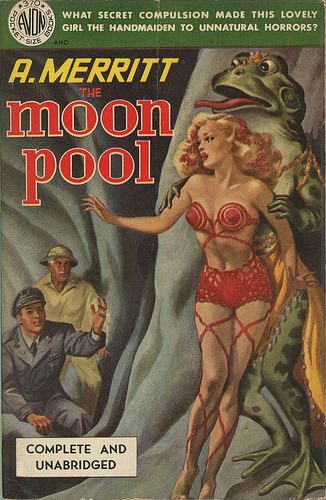
Why did A. Merritt and his fandom go away, when at one point, he was THE fantasy author? Well, obviously one big answer was the 1960s counterculture, which brought different writers like Tolkien and Lovecraft to the forefront (by modern standards Lovecraft isn’t a fantasy author, but he was produced by the same early century genre-fluid effluvium that produced Merritt and the rest). The other answer is that A. Merritt was so totally a product of the weird occult speculation of his age that it’s hard to even imagine him clicking with audiences in other eras. His work is based on fringe weirdness that appealed to early 20th Century spiritualism and made sense at the time: reincarnation, racial memory, an obsession with lost race stories and the stone age, and weirdness like the 1920s belief that the Polar Arctic is the ancestral home of the Caucasian race. In other words, it’s impossible to explain Merritt without a ton of sentences that start with “well, people in the 1920s thought that...” That’s not a good sign when it comes to his universality.
That’s it for now. Do you have any suggestions on a dead fandom, or do you keep one of these “dead” fandoms alive in your heart?
3K notes
·
View notes
Text
Tale of the Nine Tailed KDrama Review
—

—
Bingo Card for Tale of the Nine Tailed
Synopsis: The mythical nine-tailed fox, or gumiho, Lee Yeon had to settle in the city many centuries ago. Able to transform into human form, he eradicates supernatural beings that threaten the mortal world. His real aim is to find the reincarnation of his lost first love. The talented television producer Nam Ji Ah works in a show that features urban myths. In the past, her parents were involved in a mysterious car accident and disappeared, and she suspects that Lee Yeon might be connected with this accident. The half-brother to Lee Yeon is the captivating Lee Rang. Despite being half-human himself, he harbors a deep-seated contempt for all people. For sport, he will unleash his seductive prowess upon his human-du-jour, by promising to grant them their wishes, only to trick them into paying a hefty price for their earthly desires.
Overall Main Plot: Rating - 7 out of 10
Okay, I think the main thing about the plot is that it’s interesting. I’m not sure how to describe it, but it’s definitely an interesting fantasy drama with a different type of plot-line. The main antagonist is the Imoogi, but having a piece of the enemy within Ji-Ah really changed the game because now, it’s about history repeating itself and Yeon not wanting to kill her a second time and it was actually interesting to see it progress. I also loved the relationship between the characters, both the past and the present, and seeing how they play out. Whether it’s Rang and Yuri or Rang and Yeon’s, it’s interesting to see how it all comes together in a bigger picture and, again, having “history repeat itself.” But that being said, it was also super cliche—which is expected of a kdrama, but with the fantasy element, it’s even somehow more cliche with how things played out (just take a look at the bingo card because it shows). There were also a couple of other things that bothered me, regarding the main plot...
Lack of Emotional Bonding - maybe it was just me, but I was not super invested as to what was happening throughout the plot. It just felt like I had a feeling how things were gonna play out, especially when a part of the Imoogi showed itself in episode 2. About the climax of the plot (when Yeon and the Imoogi battled and died), I was a bit surprised at his choice, but I wasn’t outright sobbing. But also, because of how many dramas I’ve watched, my word shouldn’t be taken for it.
The Talupia’s Role - this lady.... knows all. But tell me why... she didn’t do anything to help them until the end and then she ended up being turned into stone. I just thought her role was interesting because it didn’t really help the characters until the end to help Yeon kill the Imoogi. While I liked her character (a strong woman who makes her own decisions), her character in relation to the plot felt so loose, even though she had a lot of knowledge that should’ve been shared. I don’t know; there are mixed opinions about her.
Characters: Rating - 8 out of 10
↣ Lee Yeon [played by Lee Dongwook] - he really just ate mint chocolate chip ice cream all the time; I thought his character was really endearing, especially since he’s def the romantic type (considering he wanted for his love to be reincarnated for like 600 years). But there were a lot of actions that I thought did not match up with his character, like: the time he tried to push Ji-Ah away “for her safety” (yeah, because that always definitely will work better than communication..... anyways) or the time he told Rang he regretted saving him that definitely did not sound like a joke. Ugh, there were just minor inconsistencies with how he was supposed to be written as a character, but overall, I did like him and root for him considering how awful the antagonist is. However, there is a small note, which will be mentioned in the romance and additional notes section for later....
↣ Nam Ji-Ah [played by Jo Bo Ah] - I was annoyed with her character at first, but I realized that I really liked how she took matters into her own hands without fear. Her independence is something that shines throughout the drama: she can work independently, but knows when to ask for help and work with others. She’s also driven for her work as a PD about urban legends and really wanted to find her parents, as well as how it all worked together. My favorite moment of her is when she is in her “fear nightmare” (whatever it’s called) and she managed to get herself out on her own because she realized that it wasn’t right/real. While it may not seemed like she did much, you also have to remember this is a fantasy drama and she’s just the human and realistically speaking, what power do you have over a literal deity? I also want to add she did less as the drama went, but she still handled things well after they played out rather than be completely helpless, so I’ll give some props to the writers for that.
↣ Lee Rang [played by Kim Bum] - okay, why is he the soft bad boy with a dark past that we’re all in love with? I think all the viewers can agree with me that Lee Rang is just... it. I believe it’s his comeback drama after five (ish) years and he did a fantastic job with this character. His character is probably the most complex in the drama, especially since he’s got abandonment issues and still wants to be loved. I think the only time I was close to tears was when they decided to kill him off to have Yeon return. I don’t know how to describe it, but he really stole the hearts of many with his heart of gold. He just has some issues he needed to resolve and we were all rooting for his redemption, only to be disappointed as he died off.
↣ Imoogi (also called Terry?) [played by Lee Taeri] - this man is completely insane. I think the actor did a great job with this character because this character... is so unlikeable, but it’s understandable as to where he lies in the main plot. Oh my god, when he said Ji-Ah’s supposed to be his bride to make him feel loved, I was laughing because he said the most cliche shit to her and thought he could just... manipulate and threaten her to like him. Like, sir... if you want to be loved, maybe don’t try to approach her that way??? But also, he doesn’t know better—literally, he’s part snake or something and it adds up. He was annoying as a character, but he made a great antagonist. I just didn’t really like how he was used to drag things out further because he really did not have... any redeemable traits.
Personal Notes: I think one thing about this drama regarding the characters is that they all fit together in the bigger picture. It’s clear how they work together and how they don’t, and it’s satisfying to see how they all play out as the plot was further developed. I really do wish there were more scenes of just the Lee brothers, especially since Rang was so deprived of that as Yeon distanced himself without a real explanation to Rang. I also would have liked if Ji-Ah had more scenes with her parents, considering that she had been trying to find them for so long—only for them not to be at the wedding??? Only for Ji-ah to nearly die for Yeon again??? Only to have their scenes cut out more and more, even though they are so important to her character??? Writers, explain how these dots are supposed to connect.
Romance: Rating - 7 out of 10
It’s clear that their romance works in this drama. While I wasn’t super invested with their romance, I still found it cute because they did a lot of dates and actually progressed as a couple. I loved it when Ji-Ah looked at him when he kissed her and was like “don’t project your feelings from your first love on me because I’m Ji-Ah, not A-Reum (whatever the name of his first love was).” It only got better from there because they were actually getting to know each other and date (like NORMAL PEOPLE). I’m also giving them bonus points because they didn’t do that weird break-up sequence with a time skip during the duration of their building romance (I’m not counting the time he was gonna distance himself to help her because they weren’t officially in a relationship or the fact that he died and she was waiting for him to return because it’s not an actual breakup).
However, I’m not a fan of the “dying for you” trope; that was one thing that rubbed me the wrong way because Yeon really died for her, only for her to offer herself up for his reincarnation (thank you Rang for stopping her). Another thing that really bothered me about them is the fact that Yeon fell in love with a child—not exactly a child, but: how do you fall in love with someone you watched grow up? I understand that because he’s a deity, he doesn’t age, but.... dude. A human? Really? (Goblin war flashbacks). Also, for a main couple, they were kind of boring. I mentioned it earlier that I wasn’t super interested in their relationship and that also made me tune out a bit during the main plot events (which is probably what made me less emotionally invested).
Second Plot/B-Plot and Secondary Characters: Rating - 9 out of 10
As I mentioned earlier, I wasn’t interested in the main characters as much. But the side characters made up for it, especially Yuri and Shinjoo’s side romance and their relationship with the kid, Suho. The whole mini family that Rang had was incredibly sweet, especially since he didn’t think he would have one and that drove him to live and I... (*screams into the distance*). I still can’t believe they wrote him to just die after all of that. Anyways.
I was also interested in the other “fictional” characters around the foxes (the Snail Bride, Talupia and her husband, the nightmare lady) because of how their myths were going to contribute to the plot and the characters and such. They all had their own stories and how it impacts them because... they’re also people; they’re not human, but they’re still people with emotions, whether it’s love, anger, or fear. As for the humans, I loved the relationships and connections they had, especially those around Ji-Ah and their connections from the past. It was all super endearing to watch especially in the face of danger.
Additional Notes:
AGE - I mentioned it before, but wow, I’m going to emphasize it. The one major thing that bothered me is how Yeon fell in love with someone he watched grow up. It’s similar to how Goblin set it up, but.. Yeon met his first love when she was like... 9? 10? Essentially, she was a literal child and (as an education major who has to work with young children)........ I was just kind of bothered by that. I get that they worked around it by making them get together as she was older (25-30ish?) but when they did the flashbacks with her as a child, I felt uneasy all over again.
“Plot Twist,” i.e., Ji-Ah being part of the Imoogi - I felt like I knew Yeon was the one who killed her in the past and felt like it was gonna come back, but I was surprised when Ji-Ah had a part of the Imoogi with her. I thought it was a smart move because it also builds tension between the three characters: who will die and who will live? In standard kdramas, they have the antagonist cut and clear and I thought it would be the same in this instance, but it was more clear as the drama went on. It’s less of a plot twist, since it was kind of built from episode 2-3 but it’s further explained to be a more standard “plot twist.”
The Ending - I always have something to say about the end of dramas and most of them aren’t good, so... this drama is not an exception to this. I already mentioned how upset I am at the fact that Rang died for Yeon, but also Yeon coming back as a human made it confusing because there’s no way he would just be.. let off the hook like that, especially with the ending scene being that Yeon didn’t come back fully human? It was unclear. In my opinion, I felt that it would have been better if: one, he died off completely or two, the two would meet again later (an ending like Hotel del Luna, where they’re both completely human and have the stable life they dreamed of).
Overall Rating: 7 out of 10
Recommended?
↣ Yes: this is a fantasy drama that had similar vibes to Goblin, so if you liked Goblin, this is probably a drama for you. The main characters also had a steady relationship building, with both making the effort so the romance aspect is a bit more top tier. It also incorporates a lot of Korean myths, so if you’re interested in seeing them, this drama would be a good recommendation. There’s also lots of twists (I don’t really know if you would call it that, but whatever) in the plot, so it always turns into unexpected directions that dramas don’t really go into (at least the ones I’ve watched). There’s also the theme of family, both biological and formative (less nuclear-family structure) that touches your heart a bit more too.
↣ No: first of all, it’s a fantasy drama—it’s gonna have the standard issues with fantasy dramas: age gaps, lots of talk with other myths and the “balanced world and whatnot”, etc. It’s pretty cliche as well with lots of tropes that are problematic (as mentioned above). There’s also a bit of imagery that might be problem: there’s a few episodes with creepy themes, so you might have to skip out on it if you know you can’t handle look at it (like me). There’s also lots of death mentioned throughout the show, considering how one of the characters literally just mass murder people because he didn’t get things his way. This drama is a bit frustrating to watch as well, either because you’re not be as super invested in it or the characters might be too much or you can’t stand mint chocolate chip and watch the main characters eat it all the time.
1 note
·
View note
Text
How’s the precarity
The Andrews government in Victoria has announced $5m over two years to explore a public paid leave scheme for casual workers in particular industries with high rates of precarity, notably aged care, to discourage people going to work sick. This intersects with my long-term interest in the health and wellbeing of people in precarious migrant communities, including international students and skilled migrant workers.
In casual work, instead of the employer holding onto a certain amount of money in reserve, in order to pay you when you take sick leave or annual leave, the employer pays out a ‘leave loading’ — an additional percentage of the full-time hourly wage. The fantasy is that the employee saves that money themselves, so they can live on those savings when they are sick or not working. (I say fantasy, because so many people in casual work are underemployed and living hand-to-mouth.)
Why is it done this way? Because your employment as a casual worker begins when you arrive for your shift and ends when it finishes. Once your shift ends, unless you’ve been working in that role long-term, there is no obligation to employ you ever again. Nor is there any obligation to employ you for enough hours per week to live on. And that’s what makes the work insecure, and what makes the lives of casual workers ‘precarious.’
I’m going into some detail here because I’ve learnt, in my travels on social media, that many people simply don’t have a clear picture of how casual employment works. It’s not a part-time job with a steady roster, the kind that might have paid for your rent and beer money during your studies in the 1970s.
People going to work sick was seen as one of the major drivers of the outbreak of Covid-19 in aged care. As Rick Morton observes, even though aged care and industrial relations are both Commonwealth government responsibilities, Andrews has the moral authority to say ‘never again.’
I spoke with Rick for an article in the Saturday Paper, in which Sally McManus was also quoted, praising Andrews’ initiative for tackling the lack of entitlements. In my comments I argued that focusing on entitlements misses the bigger picture of insecure work and precarious lives.
“The challenge is the precarity, it’s not just the lack of entitlements,” he says. “They [workers] are not going to stay home sick if they fear that their employers are not going to employ them or not going to give them shifts after that leave has finished.”
As we’ve seen repeatedly with breaches of hotel quarantine, many people living precarious lives are working multiple jobs that don’t pay enough to live on. Under these conditions, taking unplanned time away from work might put two or three different sources of income at risk. So people go to work sick.
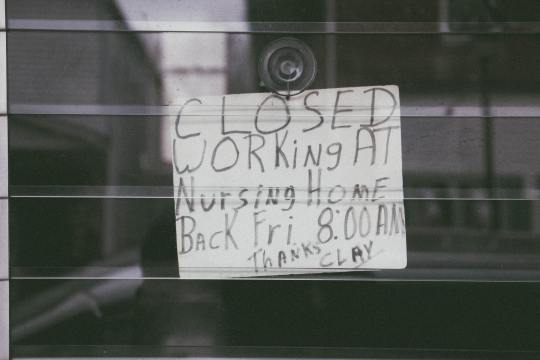
Don’t get me wrong — I think this is a step in the right direction. There are options for making this more than a bandaid solution. The Budget announced money for a scoping study, which could recommend making it illegal to vary or cut someone’s usual work hours after they take sick leave.
As I have experienced myself, though, it is not a practical remedy if we leave it to casual employees to bring complaints that will wind their way through civil law processes (industrial relations, discrimination complaints). It takes a lot of time, technical knowledge and energy, and you’re still unemployed.
McManus’ praise for Andrews also highlights an ambivalence at the core of modern Labor politics. Are unions just fighting for better entitlements for people in work? What about bigger picture questions about economic injustice? These require class analysis and radical politics and the ACTU just doesn’t go there.
Labor has long struggled with ‘the migration question’ because it recognises that precarious migrant workers are being exploited—but at the same time, it sees the migrant work stream as a strategy for driving down wages and entitlements of Australian citizens in ‘real jobs.’
Closely interwoven with these questions of industrial strategy is the history of anti-Asian racism in Australia, and new questions about soft power initiatives of the People’s Republic of China.
For all of these reasons it’s easier to focus on paid sick leave, even as the Andrews government adopts the rhetoric of tackling ‘toxic’ insecure work.
We might imagine that offering paid sick leave serves a dual purpose, reducing the impact of precarity while ensuring people don’t bring contagious pathogens to work with them. So this looks like a form of epidemic governance wrapped up in a social justice initiative. Win-win, right?
In this post I’ve made a point of separating insecure work and precarious lives. In most cases, they go together. But precarious lives encompass everything necessary for people to cope with insecure work.
For precarious migrant workers, this means relying on friends and family for access to resources like informal childcare, and community for cultural connection while living with Australian racism.
In turn, this generates patterns of social connection that can facilitate epidemic transmission without individuals in those communities ‘doing the wrong thing’ at any higher rates than any other community group.
Covid-19 escaped from hotel quarantine into a population of precarious migrant workers at a time when the Department of Health and Human Services had diminished local insights and relationships with the communities involved, followings decades of contracting out engagement in dribs and drabs of time-limited project money to funded agencies.
That’s why I expressed the concern that, following the crisis, the new Department of Health (DH) will revert to standard operating procedure, using a rhetoric of localism to justify a practice of contracting-out that has contributed to the second wave outbreak. As I put it:
“A whole bunch of people [at DH central] are about to lose their jobs at the same time as the government is going to do its favourite thing, which is contracting out to local [agencies] to do their own contact tracing.”
I know that doctors in general practice and community health are extremely keen to play a greater role in contact tracing. In most cases, they already have the trust and rapport that are essential if we want patients to give a full picture of their movements. We’ve just seen how important this is in the contact tracing failure that led to South Australia’s abortive lockdown.
But it remains vitally important that DH central has its own strong and up-to-the-moment engagement with communities. This means that when crisis strikes, it understands the communities involved and it can pick up the phone and speak directly to the people who make a difference in them.
In a broader sense, we should ditch the rhetoric of tackling insecure work and precarity until we have a specific proposal on the table for abolishing casual work.
0 notes
Text
Screenwriter Ed Solomon on Soderbergh, Noir, and How Bill & Ted Saved His Career
https://ift.tt/2Vq97R3
Steven Soderbergh’s noir crime feature, No Sudden Move, is set in 1954 Detroit: back when automakers drove the city and mobsters rotated their tires. This isn’t just another heist movie from the director of Ocean’s 11, even though it centers on a big score and hosts an impressive cast. Don Cheadle and Benicio Del Toro play two small-time criminals hired to steal a document which is very valuable to some powerful people. It’s a big-ticket item which can revolutionize the auto industry, and the price keeps going up.
For the movie, Soderbergh colludes with the Big Four Automakers to cloud the atmosphere. The caper careens through a smoggy set of turns, picking up passengers like Ray Liotta, Jon Hamm, David Harbour, Brendan Fraser, and Bill Duke (in killer shades) for a wild ride downhill. It all stops with Mr. Big, played with beneficent malignancy by Matt Damon.
Nothing is what it seems in No Sudden Move. It was written by Ed Solomon, a veteran best known for his work on Bill & Ted’s Excellent Adventure, Charlie’s Angels, Men in Black, and The Garry Shandling Show. And Solomon spoke with us about exploring dark themes, working with Soderbergh, and how he intends to continue changing how stories can be told.
Den of Geek: I really, really enjoyed No Sudden Move, and I agree, ulterior motives are sexy.
Ed Solomon: That’s very funny. I remember the moment I wrote that [line] and I was like, “Is this just me? And is this an indication of something maybe not so great about my personality?” I actually thought that, I literally thought that, and it’s funny. You’re the first person who’s ever said that. That’s really hilarious.
It made me ask the same questions about myself. Was that the creative key to the script?
Yes. The drive that got me excited about every character at every moment was that they had a secret motive. Every character had a secret motive that they weren’t letting on, to the other characters. And that’s what gave it its energy for me as a writer. It gives a kind of excitement, because what happens then is the actors don’t get to just act with so much subtext. But as a writer, you get to, you know that you’re writing people that are saying one thing but thinking something else, and that’s where all the energy is for me as a writer.
When you were first brought together with Soderbergh, how much of a story was there, or was it just a concept?
We had a concept. We wanted to do just a spare, noir drama for Don [Cheadle], and maybe a couple of other people. The concept was some guys get called together to pull off a little heist that just goes drastically sideways. And are these people? And where is it set? We decided on Detroit. We were thinking about what era does it take place in? We were thinking maybe the ’50s. And that led to Detroit, because ’50s Detroit is just so American, and a lot of things were changing in Detroit at that time. There were fascinating things happening, and there was a lot of racial tension, and the city itself was remodeling itself in the way that America was remodeling itself. It was going from trolleys and cities to freeways and suburbs.
A lot of communities were getting displaced. And knowing we were writing, that Don was doing this, it was like, “What’s going to give Don’s character the courage of his convictions?” It just seemed like the right backdrop for it. So really we came in at a concept and then started throwing story ideas around together for a few days. Then I went off to do my outline. And then I gave him a beat sheet, which he gave me the thumbs up on, and then I had a few ideas for the end. Like the big seven-page aria that comes toward the end of the film. That was an add after Steven read the beat sheet. He’s like, “Let’s bring it to this kind of operatic conclusion, with these intersecting sectors of society.”
He gave me the not undaunting charge of, “Write a seven-page monologue.” I said, “Okay, I’ll do my best.” And then, he obviously read the draft and he had some notes. We did a revision, and the next rewrite we did was when we got the cast on. It was not one of those scripts that was constantly developed. That’s one of the great things about working with Steven. Also, I wrote it on spec, so I didn’t have to worry about studios giving notes or anything like that. Because again, I had Steven there, and Steven and I both knew how he was going to end up making the film. So we got to make it how we wanted to see it before giving it to the studio.
How do you personally get into the head space for a period piece?
Several ways. Yeah, I watched the movies, but really the bigger thing was going there. Going there and really being in the spaces that these people existed in at that time, those that are left in Detroit. Talking to people who were alive then. Spending time, there was an exhibit at the Detroit Public Library that a woman named Emily Kutil, had put together called “Black Bottom Street View.” They had taken all these photographs back in the ’50s of these neighborhoods that later got raised, and Emily recreated the experience of moving through, those neighborhoods, by using photographs in the library. She basically blew the photos up and you would walk down these aisles, which represented each.
I listened to music from the time I listened to people speaking from the time, I listened to recordings from the mid ’50s, in Detroit. I searched out as much as I could to get a tangible feel, a visceral feel. But at the end of the day, it’s about using all of these pieces to create an emotional space as a writer. I tend to write more from an emotional state than an intellectual state. So, once I could find myself in what felt like, the emotional frame of mind of each character, I found it easier to really be there in that time. And we had some very helpful consultants, as well. A man named Jamon Jordan is credited in the film, ironically and totally coincidentally, he’s an extra in the film. And his picture, he is in the frame that my screen credit is. My screen credit comes over his picture, which he and I [are] thrilled about.
Jamon runs an organization called the Black Scroll Network and they do walking tours of the African-American history of Detroit. He and I went through the script together, and of course Don and I went through the script together. I mean, every actor, we all went through the script together. But at every turn, it’s about trying to keep making it more authentic and more real, and more inhabited and more alive.
So you played Joey Biltmore in a 10th grade production of Guys and Dolls.
Whoa.
Reading that tweet made me have to ask you, what was it like being a staff writer on Laverne and Shirley?
Of course, it would make you think that. Oh my God, that’s amazing. Well, this is Den of Geek, after all. I could expect nothing less, then that kind of deep dive. That’s amazing.
Actually, here’s what’s funny. I will happily tell you about Laverne and Shirley in one second, but that experience on Guys and Dolls had more of an influence on the language of Bill and Ted. Meaning Damon Runyon, and that strange cadence and odd use of sometimes, somewhat anachronistic language was an influence for me. Not for [Bill & Ted’s Excellent Adventure co-writer Chris Matheson]. I asked Chris about it. I was like, “Were you into Damon Runyon as well, or was that just me?” And he’s like, “That was just you.” And I was like, “Oh.” That had more of an influence on the creation of Bill & Ted, for me, than anything else. More than surfer dialogue or valley talk, or stoner talk. Any of that, it actually was Damon Runyon to me, funnily enough. And it was because I had been in Guys and Dolls that I got into Damon Runyon.
But Laverne and Shirley, it’s a really interesting thing. It changed my life in many ways, but probably not the ways I would have thought it was going to change my life. It made me a professional writer, but I wasn’t great at it. In other words, I was in over my head with a bunch of real professional ’80s comedy writers, and I was a senior in college. I wasn’t quite ready. I had gone from writing jokes for comedians and writing plays that were performed at UCLA to being in a room of pros, and it was stressful and difficult, and I was still a senior and I didn’t get hired back into another sitcom. And in a way, I am really grateful.
At the time, I thought I had failed, because it took me about two years. Where I was doing standup again and writing jokes, and selling jokes, and writing for a game show, and doing anything I could to stay afloat, and borrowing money from my parents to live. I almost gave up, almost thought, “I’m my own worst nightmare. I’m a flash in the pan,” but had that not happened, I wouldn’t have approached Chris Matheson and said, “Hey, would you like to write something together?” And he, and I would not have written the Bill & Ted script, which is the thing that actually turned my career around and got me back on the map. It got both of us on the map, and then it relaunched my career from a different angle.
I think had I actually succeeded on Laverne and Shirley, in a certain way, I probably would have fried [out], as one of those ’80s TV writers, as those ’80s TV writers often did. Not just from drugs. But the environment itself – I don’t think was a super healthy one for a writer at that time. For me, at least. It was just a lot of competition, not the way I would want to be as a writer.
Plus, I think there’s a certain state of mind you have to maintain that I was unable to maintain. So, in a way, I attribute my failing out of Laverne and Shirley to the relaunching of my career in a way that was probably more appropriate for where I wanted to go. It was hard. It was a very stressful experience, and I never felt like I fit in. And I never felt like I could contribute comedically at the level that those people were. It took me about four years or five years to be able to feel comfortable in a writer’s room with other comedy writers.
And in the Garry Shandling writer’s room I met some of the funniest people I’d ever met in my life, and I could never get to the comedic level they could, but I was comfortable enough to be able to add whatever my two cents would be to any situation. And that room was much more fun. I think I had just grown up a bit.
Why does Bill & Ted continue to strike a chord?
I have asked myself that question because when it first came out, it was eviscerated by critics. It was pummeled. Every serious critic, and in particular, the non-serious critics. Because for the most part, they didn’t even let serious critics review it; they’d give it to their third- or fourth-year critics, and they just trashed it. So I was like, “Well, why did it sustain? Why did it not just last, but weirdly grow, over a few decades?”
Look, it started as the characters. It was how Chris and I, who originally played these characters just screwing around, but what Chris and I were always really attracted to in Bill & Ted, was this ebullience, this sweetness, this lightness of spirit and this sort of ‘yes!’ quality to them. They feel things deeply, but they adjust quickly and come up with a plan and move forward with the best, best, best of intentions at all times. That’s a really lovely place to inhabit, as a writer.
And then when the baton was passed to Alex [Winter] and Keanu [Reeves], they took it over so beautifully. And I think there is a beneficence of spirit, of kindness to the characters, a sweetness, that I think floated to the surface and kept Bill & Ted alive over the decades. And it did fine, it did well enough as the first film to warrant a second film, barely. It’s not like it did that well, but over time, people discovered it. And it’s what made it difficult to make a third movie, because there were no “numbers” to support it. “Why should we make a third movie? The first two didn’t do all that well.” It was more anecdotal. “But everywhere we go, people seem to know it, and people seem to want a sequel. And couldn’t we do it for them?”
It took John Wick getting where it was, but it also took the rise of social media to let audiences have a voice. So that when someone would say, “Is there going to be another Bill & Ted movie?” Then the studio finally started to see, or I should say the powers that be finally started to see, “Holy moly, there’s a lot of people out there that seem interested in this.” It took that, to get the movie made.
Going back to the tweet, when I read your responses, I thought you had a bit part on Kolchak. And then I found out that you were a real suspect on the Night Stalker case. Was that the worst review you ever got?
Well, that’s hilarious. Let me just put it this way. Being a suspect, which lasted only about 15 minutes and it was a misunderstanding. It was basically, my roommate’s car, which I had cosigned for, was stolen years later and taken to the scene. It was stolen by Richard Ramirez, it was still registered to my address and to me, I guess. So for 15 minutes, people were like, “Wait, is it you? You’re the prime suspect.” And then it was like, “Oh, wait, no, it’s not you. It’s not you, you’re asleep in your room, in Westwood and this murder took place 90 miles away.” But for a few minutes there, it was kind of weird and surreal.
But that was not even as bad as those initial reviews of Bill & Ted. I remember a review of Bill & Ted where the reviewer was reviewing a movie the following week, Friday the 13th, it was Jason Takes Manhattan. And the guy was like, “Here’s an idea. How about Jason Takes Bill and Ted?” I go, “Come on, dude. You don’t have to kill us again. You killed us last week, geez.”
It’s pretty funny because here in my office, somebody printed out one of the headlines. After I tweeted that, of course, I should have known that this thing was going to follow me in a way that I didn’t expect. Meaning when I tweeted it, I thought it was just kind of a funny anecdote. I didn’t expect the barrage of clickbait headlines saying things like “Bill and Ted writer was once suspected of being the Night Stalker killer.” Plus, for about two weeks, if you Googled Richard Ramirez and went to his Wikipedia page, my picture came up with it. It was funky. And then the headlines that they were doing were crazy. So people at my parents’ retirement community, friends of my parents, would be like, “What is this?” Because for people who aren’t actually reading beyond the clickbait, they’re looking at a picture of Richard Ramirez and a picture of me, saying I was a suspect along with him.
It was hilarious, and it was a little freaky. But of course after a week or two, the news cycle shifted, and you no longer found it. But for about a week, if you Googled me all you got was that I was a suspect in the Night Stalker [case]. It was not good. And I was just recently single, too. My girlfriend and I had broken up a month and a half earlier, and that meant if I was going to date someone and their friend was going, “Let me Google your date to see if I can find out anything about him,” it would not have boded well. It did not bode well, but it was pretty funny.
When you worked with Soderbergh for Mosaic, you were changing the way stories are delivered, and I want to know if you have any other plans to bend visual arts?
Yeah, I do. And we do. And we’re working on a new thing that I’m not allowed to get into any detail on, I’ve actually been asked not to. But it’s another thing that we’ve designed to be able to be told in various different styles. And what was the ultimate challenge of Mosaic was also the greatest gift of Mosaic. There was a moment when Steven and I looked at each other and went, “How often, especially when you’ve been doing this as long as we have, do you get to do something that is so challenging, that flexes so many muscles that you’ve never used before? That you can’t help but come out the other end of it, a better writer.” And that, to me, was one of the many great gifts of Mosaic.
One was working with Steven, which was an absolute high point, developing a relationship with him. Which led to No Sudden Move, which led to this new thing, which led to me bringing him on to help us get Bill and Ted Face the Music off the ground. He was an exec producer on that. So that was of course, one great thing, but just on a creative level. Having to design a story, where each character in the story has to be worthy of their own movie, because you’re also going to tell the story from their point of view, just like you can tell it from someone else’s point of view.
The notion that every villain is the hero of their own story, or every human is the central character of their own movie. That was really at work in Mosaic. It forced me to really upgrade how I thought about what I wrote. And it also was so difficult an endeavor, it took so long and it was so difficult and so invigorating that it made other writing seem easier. Because every decade or so, I really think a creative person has to really look at the work they’re doing and make sure that they’re not falling back on old habits or old tricks. Or, for sure as a writer, not getting into a mindset of, “Oh, I know how to do this.” I think that’s death for a writer.
I think, for me, the healthiest balance is that combination of confidence and insecurity. Not even confidence. Faith, I think is probably a better word. Like, “I don’t know if I can do this, but I think if I stay with it long enough, I’ll figure it out.” To me, that’s the sweet spot. No Sudden Move was a genre I’ve not written in and a tone I hadn’t written in. That alone was reason to do it, with a director I trusted and I really admire, and with whom I love working. For an actor, I’ve always wanted to work with? Don. That was like, “I’m going to do this and I’m going to work my ass off to get it right.” That’s that was my attitude on it. “And when I get out the other side of it, I want to be a better writer.”
And that’s my goal with everything, now. “When I get out the other side of this, I want to be a better writer than I was when I started it.”
No Sudden Move is a twist on noir, gangster, and industrial crime films. How did you come to the catalytic converter, and what research were you doing on the actual crime of it?
There’s always a relationship between research and writing. How to do the right amount of research without getting bogged down, and how to learn from the research and how to use the research to help you with where you want to go with it. I knew that the characters were going to be trying to steal something and we also said, “It might be cool if it’s initiated by one of the smaller auto companies, against one of the bigger ones.” I was looking for interesting innovations that happened in ’54 or ’55 that might have happened with GM or with Ford, or with Chrysler, that maybe Studebaker would have been wanting, or Nash, or something.
And then I thought, “Wait a minute, it’s going to be much more interesting if it’s an innovation that they tried to bury, as opposed to that they tried to actually bring out into the world?” And I was like, “What kind of stuff? What were they doing wrong back then? What have they uncovered that they forgot?” That led me to discovering this notion of the pollution control technologies that the automobile industry was forced to collude [on]. And so, for the first time, there was a lawsuit, the City of Los Angeles sued the Big Four, the Big Four lost, and the Justice Department ruled that the Big Four had to collude. For the first time, they had to collaborate, share technology, to come up with ways to reduce emissions in the automobile.
So for the first time in history, the auto industry, the Big Four, collaborated on something. And what they ended up collaborating on was not coming up with an answer, but finding an answer and then burying it. And I thought, “Okay, that’s more interesting.” In my research on Detroit in the ’50s, I discovered the deep potency of this idea of the cities re-landscaping themselves. And then those same companies were pulling up the trolley tracks, red-lining districts, making it so certain people couldn’t live in other communities. They destroyed Black Bottom, Paradise Valley, which were these thriving, African American residential and business communities. And I thought, “Well, that’s an interesting backdrop. And so, what if we set it against this changing landscape of Detroit?”
I knew we had Don, and so it also made sense that the person that he would be with would represent the other side of the spectrum, someone who is racist, and these two guys have to work together. [And the other guy] is not only racist, but he’s dealing with someone who’s smarter than him, and ahead of the game more than he is. So he’s got to deal with a kind of appreciation for this guy, that he’s kind of grown up distrusting, without knowing him. It seemed to give a deeper fuel to the back and forth between these two guys, as they’re trying to fuck each other over, over the course of the movie.
We were not trying to do a “socially conscious film.” We were really trying to just make a fun yarn. And to me, it just added to the fun, because it added to the potency of the characters. Like it gave Don’s character more muscle and more of a sense of righteous indignation. And it gave Benicio’s character more of a deeper character place to come from when dealing with Don’s character. It was not designed so that it would be “about something bigger.” It was actually designed to just give a bit more weight, so that the characters were more fun. It’s funny, because I’ve heard it referred to as a gangster movie, and it literally never crossed my mind, that this would be a gangster movie. Never. Until today.
Read more
Movies
No Sudden Move Review: Slow Speed Heists Get Away With Bigger Hauls
By Tony Sokol
Movies
Examining Bill & Ted’s Excellent Pop Culture Adventures
By Chris Cummins
I’m the gangster geek at Den of Geek, so I have to look at it that way. And I got to say, Matt Damon’s character is scarier than Luca Brasi.
You know what? I appreciate your saying that. And that’s why I’m like, “Yeah.” And that guy, he’s not in any kind of organized crime, but he’s legit scarier. And yet, he’s probably the most civilized of everybody. I appreciate what you’re saying, actually. Very much appreciate that. Luca Brasi, that’s so funny. I was thinking about Luca Brasi, just recently.
I think about him all the time. Almost everything you’ve worked on has pushed barriers. The Garry Shandling Show changed television, you changed entertainment.
I’ve always wanted to try to push boundaries, wherever I could, partially for purely selfish reasons of not getting stale. And not falling back, as we were saying before, and not falling back on so-called old tricks or old habits, because I’ve always wanted to have longevity. I’ve always wanted to constantly improve as a writer, and be vital. I don’t want people throwing a bone at me, just so I can work. I want to be able to have something to say that’s meaningful. It’s been both good and bad for me. It’s been good for me in that, it has kept me growing, but it’s been bad in that I’ve fallen on my face a lot.
I’ve really taken some swan dives and landed on cement. And that’s hurt. However, I think truthfully, taking chances and failing has probably led to more success and longevity than the successes I’ve had. Weirdly. It’s great to have success, because it makes you be perceived as viable by the people who make movies and who hire writers. But honestly, as a writer, it’s better to have failures as long as you have the emotional resolve to be able to get up and keep walking, and look honestly at where those failures are your fault.
I don’t think it’s possible to have all success anyway, but if I guess if you have all success, nothing’s a problem for you. But I think most of my friends who have a lot of success and don’t have a lot of failure, who are writers, don’t usually have a lot of longevity, which is interesting. And I don’t exactly know why except I think you stop challenging yourself, and your work stops becoming relevant. I think. I’ll know more in a decade or two, and we’ll get back on it. And we’ll see if my strategy worked or didn’t.
The new movie finds relevance today by going back to the past, and by going back to the filmmaking styles of the past.
I’m so grateful to hear you say that. Steven used these Kowa, I think that’s those anamorphic lenses that he had fixed on top of the RED monster camera, the digital camera. So that’s why it has the look it has, and I really appreciate the way everyone really went for authenticity. I think sometimes you can speak better about the present when you’re speaking, and you set it, in the past. Because sometimes you need that distance to be able to actually see yourself. And then when you’re just looking at a current, cutting edge, modern story, it somehow doesn’t resonate as much. It doesn’t have as much poetry.
No Sudden Move is available to stream on HBO Max.
cnx.cmd.push(function() { cnx({ playerId: "106e33c0-3911-473c-b599-b1426db57530", }).render("0270c398a82f44f49c23c16122516796"); });
The post Screenwriter Ed Solomon on Soderbergh, Noir, and How Bill & Ted Saved His Career appeared first on Den of Geek.
from Den of Geek https://ift.tt/3xu5wQ9
0 notes
Photo

Michael Parekowhai, The Lighthouse, 2017, installation. https://www.aucklandlive.co.nz/the-lighthouse
Week 3
What might the work/s be about?
From just looking at the picture you can see that it is a big sculpture of Captain Cook sitting and looking down. Therefore I believe that this sculpture is about the history of Captain Cook and Aotearoa. I have looked at https://www.aucklandlive.co.nz/the-lighthouse and found that the sculpture is titled The English Chanel and its location is Queens Wharf in a house looking building called The LightHouse “The Lighthouse is the house that holds the whole universe as we know it.” Captain James Cook is sitting among neon lights which I didn’t at first know the true meaning behind the lights. The neon clusters are to represent star constellations.
Star constellations from our Māori ancestors, were used as a form of knowledge to be able to voyage in the correct direction by tracking the position of the stars and watching them throughout the nights. Star navigation is important nowadays as we continue to look back at the knowledge of our ancestors. For example in the episode Artefact(watched in communication for makers), Jack Thatcher, talks about how he uses the stars similar to our ancestors to track the direction he is voyaging in. Jack would look at the stars throughout the night and use their knowledge to help him on his own journeys across Aotearoa. This is an example of knowledge from the past still being used today.
My Groups diagram/sketching/notes.

From researching and reading about The Light house our group noted down important information to do with The Light House and The English Channel.
Reading notes
I have chosen Byrt, Anthony (Pākehā). "State house rules: Michael Parekōwhai's sculpture is Auckland's new best thing". Metro, 7 February 2017. I have chosen this reading because it is about The Light House and Michael Parekōwhai’s work that we have chosen to study.
The location of The Light House/ The English Channel is Queen’s Wharf in Auckland.
“The struggle for the retention of this land,” Ngāti Whātua leader Joe Hawke said in 1977, “is the most important struggle which our people have faced in many years. And to lose this last bit of ground would be a deathblow to the mana, to the honour, and to the dignity of the Ngāti Whātua people.”
still, from almost every point around the harbour, you can see that mansion-less strip of green, a tribute to the power of peaceful resistance and the mana of Ngāti Whātua.
Michael Parekōwhai whakapapas to the East Coast
‘The Lighthouse’, a powerful and permanent sculpture in the shape of a state house
Since ‘The Lighthouse’ is shaped like a state house, it looks like a place where someone lives and not a piece of art. I find this artwork interesting because it is placed in a state house and not a gallery. In my opinion the house feeling could make people feel more at home to the art piece rather than being surrounded in a massive art gallery with thousands of people all walking through a bigger building. It can also welcome people to look inside the the building as if they are at someones home or Whare. This building is smaller and you would never guess what was inside unless you knew ‘The Lighthouse.’ I would walk passed this and think that someone lives inside and not expect “That it is more than just a house.”
It simultaneously memorialises Māori resistance, pays tribute to our shared histories of navigation and migration, honours our egalitarian past, and acts as a gesture of permanent subterfuge in the heart of our property-obsessed city
There were cries for consultation (which the public duly got, with over 80 percent of submissions in favour).
it’s a one-to-one model of a two-storey state house. The windows are slightly lower than a regular house so that kids and the disabled can look through and experience the work fully
The artist has thought about how the user will view the artwork and has taken the audience into consideration. Mentioned in Communication for Makers we talked about accessibility for disabled and to always think about how people move around your design. The artist has lowered the windows to allow all audiences to get an experience by being able to look through the windows. This means kids and people with disabilities who are unable to see through higher windows can look at the art piece and not be disadvantaged in anyway. The stairs on the outside are just for show to look like a state house. It also means that some viewers are welcome to look at The English Channel from above. Therefore some audience may be restricted because of their disabilities because they may not be able to go upstairs, but this issue is resolved by having the windows on the bottom. This does have a disadvantage though if they want to look at top. When designing always ask yourself, how will the audience access your art work? Can everyone access your artwork without any disadvantages?
the entire construction budget came from private sources: a million dollars from Barfoot & Thompson and another $500,000 from anonymous donors. Auckland Council’s contribution came through things like staff time, site investigation, research, and consents.
The colour is a steely blue that sits perfectly between sea and sky. Unlike actual state houses, it has fancy copper gutters, which the salt air will gradually oxidise to a shimmering green
Around its perimeter is a wooden walkway that’s more jetty than deck, designed to create the effect that the whole structure is floating. On one side is a staircase, which takes you up to look through the upper windows; halfway up is a landing that offers a perfect, unimpeded view of the Waitematā, like a platform on a cruise ship.
Shutters, another architectural divergence from a traditional state house.
The house itself isn’t actually the most important part of the work. The most important – and exciting – aspect is what you see when you look inside.
when he doesn’t make fun of a cultural convention, but memorialises it, the best example being The consolation of philosophy: Piko nei te matenga series – 12 photographs of arrangements of artificial flowers commemorating battlefields in World War I where the men of the Māori Battalion fell.
‘The Lighthouse’ is one of the very rare works that achieves all three qualities at once. Looking through the windows (visitors can’t go inside) there’s no division between the two floors.
You are able to just walk past the art piece and can go at your own time just by looking through the windows. As mentioned before the windows are the bottom are accessible for kids height or people with disabilities who are unable to look through higher windows.
The only other feature that can be associated with a conventional state house is a moulded fireplace.
it was suggested the work would contain a costly Venetian glass chandelier, a multi-layered reference to New Zealanders constantly looking to the “old world” for cultural affirmation and the crucial role the New Zealand forces played in liberating Venice at the end of World War II
walls are covered in neon constellations, the same star formations that, on a good night, you’ll see when you look up into the sky. They’re also the constellations that guided the first people here and that have been crucial to Pacific migration
Star constellations as I have mentioned before are apart of our ancestral knowledge. When coming to Aotearoa our ancestors would use the stars to navigate the vast pacific ocean on their journey. This navigation was done by tracking the stars throughout the nights and continuously watching the star consultations to track the direction they were heading in. For example, in my own time I use the southern cross to locate the south because it points towards the south and is relevant to Aotearoa star constellations.
Star constellations: were also vital to Captain James Cook’s voyages.
Material = a giant stainless-steel sculpture of Captain Cook, trapped like Gulliver, sitting pensively in front of the fire – a static form whose surface moves like mercury as the constellations reflect off him.
The neon constellations are carefully sequenced rather than simply flashing on and off, so that light moves around the interior – and around Cook – fluidly
Matariki star cluster will rest on the black maire floorboards – but the points will be neon facsimiles of signatures on the Treaty of Waitangi, including that of the flag-chopper, trickster and iconoclast, Hōne Heke.
This connects to Māori history of the Treaty of Waitangi and Hōne Heke. As well as using Matariki star cluster that represents the Māori new year.
The artwork’s location is essential. Like Bastion Point, it is Parekōwhai laying permanent claim, amid a housing crisis, to a prime piece of real estate with a replica of the modest homes that were rolled out across the country by a government that made the welfare and safety of its citizens a paramount concern.
There is also the colonial quirk that the state house, architecturally speaking, is a design modelled on the idealised English cottage and transplanted on the other side of the world.
The state house is modelled on the idealised English cottage - British colonisation of New Zealand?
‘The Lighthouse’ is a state house at the end of Queen’s Wharf. But it’s also Hōne Heke and Joe Hawke. Hōne Heke choped down the British flag pole (my own prior knowledge from primary/intermediate school)
It’s Parihaka, Ōrewa, and The Foreshore and Seabed Act. It’s about being evicted from your home and finding ways to survive, whether in 1880 or now. And it’s about reclaiming what little of your land you can, then making the people who took it in the first place look at you, and confront what they’ve done
Parekōwhai might be a jester, but his job isn’t to entertain you, please you, or make something pretty. You do, however, have to respect it, because it has just as much right to be standing on the end of that wharf as you do.
THE ARTIST SPEAKS
When standing on the end of Queen’s Wharf, it behaves more like a lighthouse and beacon.
The idea engages with the act of looking. You look into the work, and through the work, and beyond the work to the harbour
Within the interior of house, the only domestic feature that remains is the fireplace. The glow from the installation within suggests our home fires have long been burning and the lights are still on.
‘The English Channel’ speaks of navigation, history and voyaging, deliberation and reflection.
This made me question about how not only did captain cook voyage to Aotearoa but our ancestors also voyaged using similar star constellations. Why is this only about Captain James Cook? could our ancestors be included in the art piece because its not only Captain James Cook who did voyage?
How did you come to this reading of the work/s?
I decided to investigate this reading because I felt that since my group has chosen to do Michael Parekowhai, The Lighthouse, 2017, this reading talks specifically about The Lighthouse and its meaning behind the design and how it is relevant to Aotearoa history of Captain James Cook and our Ancestors. For example, the star constellations represent the star navigation our ancestors took on there voyages but also how Captain James Cook voyaged to Aotearoa.
How does the work/s relate to the concepts of Mana tangata, and whakapapa?
Whakapapa and connection to our ancestral knowledge is mentioned through The Light house art work. It incorporates knowledge from our whakapapa - our ancestors using star knowledge to navigate to Aotearoa. It also talks about how the Artist whakapapas back to the east coast and not from Ngāti Whātua. Michael is working with different Iwis because of the location. Michael said “It’s fortunate that ‘The Lighthouse’ sits not on land, but on a wharf above the water. It is the sea that connects the Waitamatā to the East Coast, to the West Coast and encompasses the entire country. Throughout Michael he says “is the most important struggle which our people have faced in many years. And to lose this last bit of ground would be a deathblow to the mana, to the honour, and to the dignity of the Ngāti Whātua people.” This shows how he has honoured the mana and power of the people. According to https://maoridictionary.co.nz/word/3437 the word mana means “power and status accrued through one's leadership talents, human rights, mana of people.”
What other recent events, concepts or contexts can you connect them to?
As mentioned above during the reading it talked about how some of the neon stars related to our knowledge of navigation, but also to do with the event of the Treaty of Waitangi, although this is not a recent event, it still shares importance with us today and our history. It also overall connects to Captain James Cook and the event of colonising New Zealand. The big statue is him sitting down with neon collations surrounding him. Also The Lighthouse is designed to modelled on the idealised English cottage and transplanted on the other side of the world. Therefore has involved more in-depth of the colonisation of British and New Zealand state houses.
"Artefact", by Dame Anne Salmond, series 1, episode 1, Maori Television, Monday 7th May 2018. https://www.maoritelevision.com/shows/artefact/S01E001/artefact-series-1-episode-1
Byrt, Anthony (Pākehā). "State house rules: Michael Parekōwhai's sculpture is Auckland's new best thing". Metro, 7 February 2017.
John C Moorfield, Te Aka Online Māori Dictionary 2020 https://maoridictionary.co.nz/word/3437
The Lighthouse, Auckland Live, : Michael Parekōwhai's sculpture https://www.aucklandlive.co.nz/the-lighthouse.
0 notes